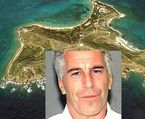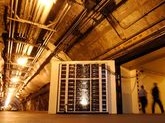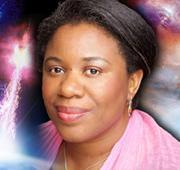 Star wars: Cambridge scientists in epic battle to beat space weather
Star wars: Cambridge scientists in epic battle to beat space weather
Cambridge News, 10th February 2014
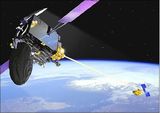 Cambridge scientists are spearheading the mission to stop space 'weather' wrecking the many hundreds of satellites orbiting the Earth.
Cambridge scientists are spearheading the mission to stop space 'weather' wrecking the many hundreds of satellites orbiting the Earth.
Fierce magnetic storms pose serious risks to communications machines, putting them out of commission and running up enormous bills.
In 2003, a massive radiation storm caused nearly 50 satellites to malfunction - and one of them, worth £400 million, was a total write-off.
The damage is not like that in the hit movie Gravity, where a spacecraft is hit by debris - but the radiation can mess up electronic circuitry.
Scientists, satellite operators, Government officials and representatives of the insurance industry have been meeting in Cambridge to discuss the latest advances in space weather forecasting.
Prof Richard Horne of the British Antarctic Survey is leading a European Union-funded project called SPACECAST, which for the last three years has been investigating and modelling the physics of high and low-energy electrons and protons in space.
The system provides "risk indices" for satellite operators of the radiation in different satellite orbits.
Prof Horne said: "Despite all the advances in design, satellites are still damaged by space weather. In March 2012 three suffered loss of services for hours during a space weather event. Now, for the first time, we can forecast radiation levels for a whole range of different orbits.
"The new system, which is updated every hour, will help protect satellites used for navigation, telecommunications, remote sensing and other services. Nobody has done that before."
Comment: Please note the tone of the language being used by scientists.... Very similar to the press release from scientists, "Protecing Our Earth"... Besides that, due to examples of space weather scientists echoing my sentiments, I am seriously wondering how many space weather scientists visit this blog.... Well, I have been saying "it's like star wars in lower Earth orbit" for a while now, and the evidence is clear to me that this is due to intense electric fields generating natural atmospheric lasers. The harsh reality of the arrival of a new cosmic dispensation has been established.
-
'Chorus waves' build the need for speed in Earth's radiation belts
NBC Science News, 18th December 2013 Flashback!
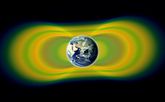 Waves in the plasma trailing behind Earth are responsible for making the northern lights dance in the sky, but according to new research, they also create another cosmic wonder.
Waves in the plasma trailing behind Earth are responsible for making the northern lights dance in the sky, but according to new research, they also create another cosmic wonder.
Known as chorus waves, these oscillations also cause the rapid acceleration of electrons already trapped in the planet's radiation belts. The fluctuations occur in the very low frequency range, but can send charged particles spiraling into the atmosphere at velocities approaching the speed of light.
Comment: Hmmm... Space scientists are admitting that strong electric fields in the upper atmosphere are causing particles to accelerate to nearly the speed of light.... Space science has well and truly moved on.... Besides that, I am picturing this as waves being generated in Earth's magnetotail that hit the Van allen belts surrounding Earth which makes the particles in the magnetic field lines spin faster... Maybe a suitable analogy is like how a mill waterwheel will spin faster when there is a flood... When those water wheels spin at high speed, there is some inevitable loses and a not of spray... In Earth's upper atmosphere particles accelerated to nearly the speed of light appear as beams of electrons (lasers?) that hit satellites and enter Earth's lower atmosphere... This is why I imagine that chorus waves are the cause of the "killer electrons," just like space scientists have been muttering about for quite some time, see NASA Spacecraft Records 'Earthsong' I imagine that we are really talking about natural lasers, but nobody wants to come out and directly tell us that during geomagnetic storms, it's like stars wars out there in lower Earth orbit... But the huge amount of resources being allocated in trying to deal with the increasing risk of billions of dollars worth of satellites being knocked out is telling us that this is now quite serious.
Musical space-weather reports from NASA's LRO mission
Phys.Org, 10th January 2014
British space-weather centre will give advance protection from solar super-storms
The Independent, 25th December 2013
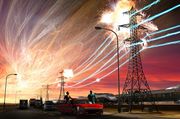
Britain will next year have its own space-weather centre for predicting the arrival of solar "super-storms" that can trigger electricity blackouts across whole cities and knock out GPS satellites, the Government will announce today.
Space weather forecasts will start from the spring of 2014 and are designed to give early warning to private companies and public utilities with critical equipment that is vulnerable to electrical malfunction during a large solar storm.
The Met Office, which is charged with providing the round-the-clock forecasts, will receive £4.6m over the next three years to bring the service fully online, covering 365 days a year. [...]
If coronal ejections end up hitting the Earth, these huge bodies of electrically charged particles can cause geomagnetic storms and power surges within the electrical transformers of the National Grid. Damaged transformers can take weeks to repair. David Willetts, the Universities and Science Minister, said Britain's increasing reliance on electronic technology makes it more vulnerable than ever to solar super-storms.
Large events like these are calculated to occur about once every couple of centuries – the last one of this size hit the Earth in 1859.
"Space weather is identified as one of the significant risks to our national infrastructure. There are two main risks: one is to the power system of transformers tripping out; a second vulnerability is to satellite systems," Mr Willetts said.
"We've got more systems that are potentially more vulnerable to space weather. There are more satellites out there and electricity systems are more extensive than ever before so one of the reasons why we've decided on this investment is because we have this potential increase in vulnerability," he added. [...]
Solar super-storms, however, such as the 1859 event named after British astronomer Richard Carrington, have the potential for widespread disruption, particularly if they cause power surges in electrical transformers or satellites.
"We're really talking about a repeat of events like the Carrington storm in 1859. That has a return period of about one in 100 to one in 200 years," said Mark Gibbs, head of space weather at the Met Office. "That means there is probably a 12 per cent chance of one occurring in the next decade."
Comment: The dramatic impact of space weather is changing our world... Currently, we are not properly prepared, a mega solar blast means those on the sunward side of the planet at least will experience the decimation of our modern technological world... [Maybe, gigantic excessive electric currents circulating the globe could even cause world devastation...] At this present time, based on what has been reported, I am not sure any warnings will prevent this... What is frightening is the July 2012 near miss... After all the intransigence by some... humanity got a really significant reminder from the cosmos about the new terms and conditions of living on planet Earth... At all costs, we must avoid a complete technological meltdown...
'Chorus waves' build the need for speed in Earth's radiation belts
NBC Science News, 18th December 2013

Waves in the plasma trailing behind Earth are responsible for making the northern lights dance in the sky, but according to new research, they also create another cosmic wonder.
Known as chorus waves, these oscillations also cause the rapid acceleration of electrons already trapped in the planet's radiation belts. The fluctuations occur in the very low frequency range, but can send charged particles spiraling into the atmosphere at velocities approaching the speed of light.
Comment: Hmmm... Space scientists are admitting that strong electric fields in the upper atmosphere are causing particles to accelerate to nearly the speed of light.... Space science has well and truly moved on.... Besides that, I am picturing this as waves being generated in Earth's magnetotail that hit the Van allen belts surrounding Earth which makes the particles in the magnetic field lines spin faster... Maybe a suitable analogy is like how a mill waterwheel will spin faster when there is a flood... When those water wheels spin at high speed, there is some inevitable loses and a not of spray... In Earth's upper atmosphere particles accelerated to nearly the speed of light appear as beams of electrons (lasers?) that hit satellites and enter Earth's lower atmosphere... This is why I imagine that chorus waves are the cause of the "killer electrons," just like space scientists have been muttering about for quite some time, see
NASA Spacecraft Records 'Earthsong' I imagine that we are really talking about natural lasers, but nobody wants to come out and directly tell us that during geomagnetic storms, it's like stars wars out there in lower Earth orbit... But the huge amount of resources being allocated in trying to deal with the increasing risk of billions of dollars worth of satellites being knocked out is telling us that this is now quite serious.
-
U-M space weather model picked to improve US warning system
Phys.Org News, 17th December 2013
A University of Michigan space weather model beat out four other contenders for a spot in the national Space Weather Prediction Center's forecasting toolbox.
It is the first time that computer models based on a firm understanding of physics have overtaken simpler, statistics-based models to predict magnetic disturbances due to space weather. The new model can also give information about where the effects of a geomagnetic storm will be weaker or stronger around Earth.
[...]
Using measurements from ACE, the National Oceanic and Atmospheric Administration's Space Weather Prediction Center has been making forecasts from statistics-based, or empirical, models for space weather. These models work reasonably well for estimating the strength of magnetic fluctuations on a global level within the range of space weather observed before. However, these models cannot predict events outside their statistical comfort zones, like the 1859 storm, or where around Earth magnetic disturbances will occur.
That's why NOAA put out a call for new models that could provide more accurate predictions. They tested two empirical models with local forecast capabilities and three physics-based models, including Michigan's. The physics models outperformed the empirical models and Michigan's came out tops.
-
Princeton and PPPL launch center to study volatile space weather
Princeton Plasma Physics Laboratory, 13th December 2013
 Researchers at Princeton University and the U.S. Department of Energy's Princeton Plasma Physics Laboratory (PPPL) have launched a new center to study the heliosphere, the complex and frequently violent region of space that encompasses the solar system.
Researchers at Princeton University and the U.S. Department of Energy's Princeton Plasma Physics Laboratory (PPPL) have launched a new center to study the heliosphere, the complex and frequently violent region of space that encompasses the solar system.
This region is carved out by the solar wind – charged plasma particles that constantly stream from the sun – and gives rise to space weather that can disrupt cell phone service, damage satellites and knock out power grids. Such stormy weather results from solar flares and coronal mass ejections – huge solar eruptions that periodically hurl millions of tons of electrically charged plasma particles into the heliosphere. Eruptions that slam into the magnetosphere – the magnetic field that surrounds the earth and extends some 75 million miles into space – can trigger disturbances called geomagnetic storms. One notable outburst blacked out the Canadian city of Montreal and most of the province of Quebec for 12 hours in 1989. [...]
The center combines the resources of Princeton's Department of Astrophysical Sciences and PPPL and facilitates collaboration between them. For example, the joint enterprise will bring together the Princeton work on an explosive phenomenon called magnetic reconnection with PPPL research on the subsequent acceleration of plasma particles caused by waves in the plasma, which takes place in the inner magnetosphere – the section closest to Earth. Such processes underlie geomagnetic storms and related phenomena known as substorms.
Comment: Presumably, space weather is no such a big issue that the top universities in the United States are being compelled to allocate resources and join the task force to mitigate the ferocity of the new cosmic conditions in space.
-
The Solar Storm "War Game Scenario"
Proposed step to help society prepare for a solar storm disaster
Earth Sky, 10th December 2013
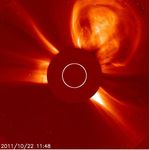 "We would like space weather users, operators of systems, and policy makers adopt this event immediately and do war game scenarios with it." – Daniel Baker
"We would like space weather users, operators of systems, and policy makers adopt this event immediately and do war game scenarios with it." – Daniel Baker
Solar scientists at the University of Colorado Boulder are pointing to a 2012 solar storm and its CME as an example, they say, of why society needs to prepare. Daniel Baker, director of CU-Boulder's Laboratory for Atmospheric and Space Physics, gave a presentation on this subject to other scientists this week the annual American Geophysical Union meeting in San Francisco. Dr. Baker told EarthSky:
We would like space weather users, operators of systems, and policy makers adopt this event immediately and do war game scenarios with it.
Comment: I was picking up military reports about space weather back in 2005 so I would be amazed if they are not already doing "war game scenarios", especially now we have some good data. I honestly think this press release is a desperate effort to wake folk up. These space scientists realise the enormity of the consequences of what would happen if Earth receives a knockout blow to our modern technological world... I have explained ad infinitum about what has changed... The citizens of planet Earth are living in a completely new cosmic dispensation, so pretending nothing has happen does not change our vulnerability. SOHO coronagraph images/video and the ENLIL space weather model for the 22nd - 23rd July 2012 G5 near-miss CME are embedded here. Update I changed headline after I was informed that the fantasy computer game Assassin's Creed III: Liberation (the whole series has sold well 55 million copies by March 2013), took advantage of the 2012 hype. In this game version, the main fictional character is on a mission to protect Earth from the impact of a devastating solar flare. Personally, I think our current cosmic reality on this planet needs to be taken a lot more seriously than just encouraging the military to play yet another war game. Thanks Mihail D. for the info.
CU professor: Severe space weather shouldn't be ignored
Denver i Journal, 9th December 2013
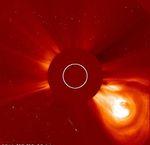
BOULDER – A massive ejection of material from the sun initially traveling at over 7 million miles per hour that narrowly missed Earth last year is an event solar scientists hope will open the eyes of policymakers regarding the impacts and mitigation of severe space weather, says a University of Colorado professor.
The coronal mass ejection, or CME, event was likely more powerful than the famous Carrington storm of 1859, when the sun blasted Earth's atmosphere hard enough twice to light up the sky from the North Pole to Central America and allowed New Englanders to read their newspapers at night by aurora light, said CU-Boulder Professor Daniel Baker. Had it hit Earth, the July 2012 event likely would have created a technological disaster by short-circuiting satellites, power grids, ground communication equipment and even threatening the health of astronauts and aircraft crews, he said.[...]
"My space weather colleagues believe that until we have an event that slams Earth and causes complete mayhem, policymakers are not going to pay attention," he said. "The message we are trying to convey is that we made direct measurements of the 2012 event and saw the full consequences without going through a direct hit on our planet."
Baker will give a presentation on the subject at the 46th Annual Fall Meeting of the American Geophysical Union held in San Francisco Dec. 9 to Dec. 13.[...]
"The Carrington storm and the 2012 event show that extreme space weather events can happen even during a modest solar cycle like the one presently underway," said Baker. "Rather than wait and pick up the pieces, we ought to take lessons from these events to prepare ourselves for inevitable future solar storms."
Comment: Hmmm... Baker et al. have realised that policy makers are not taking the issue of space weather seriously enough. Today, space scientists and engineers don't just have the historic 1859 Carrington geomagnetic storm as a precedent to cite. In July 2012, there was seriously life-threatening CME that missed Earth by a week that policymakers must consider... The reality is the consequences of a major space weather event are no longer just conjecture, we have data! Maybe, Baker is trying to warn higher ups that the current worst case space weather scenarios used by authorities that have to consider existential risk [major threats to the existence of humanity] are simply not good enough and the impact of a major space weather event would be even more horrendous than many want to contemplate... Oh well, as in any major world cataclysm there will be some survivors, but due to our current state of unpreparedness, I don't have much hope for our modern technological socieites where very few have any relevant survival skills. This is the link for the original press release,
CU-Boulder scientist: 2012 solar storm points up need for society to prepare.
UNB scientists expand network to track space weather
CBC News, 2nd December 2013

New Brunswick researchers have returned from the Arctic frontier after installing gear that will allow them to explore high into the atmosphere.
The excursion successfully expanded the Canadian High Arctic Ionosphere Network. CHAIN is a space weather monitoring grid that maps radiation blooms coming from the sun and solar winds. That space weather impacts everything from cell phone signals, navigation systems to commercial plane routes on Earth.
"We installed eight more GPS systems to the network," says project head and space physicist P.T. Jayachandran. "So currently we have 18 up and running."
Those 18 stations monitor the ionosphere, a region 90 kilometres above the Earth's surface. It is there that particles charged by the sun start to bombard the planet. At times that interaction is visible as the Northern lights. But its weather has big implications because of today's reliance on technology.
Cell-phones, flight paths, and air-traffic are all things that suffer when that space weather turns nasty. [...]
The recent expansion is just the latest in an effort to bolster the network to a total of 25 stations by next summer. [...]
Once CHAIN grows to 45 Arctic outposts, Jayachandran hopes that researchers will start to be able to build somewhat predictive forecasts, although he admits it is difficult when this type of weather is generated 150 million miles away in the centre of the solar system.
Comment: Meanwhile, the attempt to mitigate the impact of space weather on the running of our modern technological society continues to grow day by day...
Space weather's effects on satellites
MIT study finds that high-energy electrons in space may be to blame for some satellite failures
The Almagest, 21st November 2013

CAMBRIDGE, Mass– Is your cable television on the fritz? One explanation, scientists suspect, may be the weather – the weather in space, that is.
MIT researchers are investigating the effects of space weather – such as solar flares, geomagnetic storms and other forms of electromagnetic radiation – on geostationary satellites, which provide much of the world's access to cable television, Internet services and global communications. [...]
Today, engineers design satellites with space weather in mind, using radiation models to predict how much radiation a satellite may be exposed to over its lifetime. Cahoy notes that a satellite's radiation exposure may vary depending on its orbit. For instance, some orbits are more dangerous than others; engineers choose components that can survive and operate in such environments.
Comment: It's just very strange that Earth is now experiencing a new cosmological dispensation but few are aware or interested. Personally, I just have the satisfaction that I worked out what 'The Shift' was really about and can be proud of the fact that I made an effort to inform. We are now overdue for a major solar blowout that occurs approx. every 150 years. If and when we get a major geomagnetic storm with disasterous repercussions for possibly hundreds of millions of people, I will just have to shrug because I know I did my best. I am just sorry that there are so few genuinely caring people about with enough power to make a difference. Ignorant people cannot make informed choices... I even wonder how many that came across my work but dismissed my analysis as wrong are now realising that I was dead right. Are these folk wondering about about the wisdom of their past and even current passivity?
The Facts About the 2013 Gov Drill on US Power Grid
The North American Electric Reliability Corporation (NERC) will be involved in a nationwide drill later this month.
NSBC News, 11th November 2013
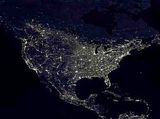
Susanne Posel (OC) , – NERC will be joined by utilities corporation executives, stakeholders, National Guardsmen, the Federal Bureau of Investigations (FBI) antiterrorism division and international partners from Canada and Mexico to prepare for an emergency drill that will "simulate physical attacks and cyber attacks that could take down large sections of the power grid."
NERC maintains that they are "running a simulated exercise to practice crisis response and information sharing. No real power outages will occur due to this exercise. The scenario does not involve EMP."
Indeed nearly 200 utilities corporations and various organizations have agreed to participate in the drill to expand on the idea of having "a loss of power for" an extended period of time "to explore how governments would react as the loss of the grid crippled the supply chain for everyday necessities."
To accomplish this, the blueprint entitled GridEx II will be implemented, as modeled after the initial GridEx drill that was held in 2011. [...]
Charles Bolden, director of NASA, discussed "family preparedness" and a "family support system" in conjunction with the operation Eagle Horizon in the event of a disaster.
The 2013 Eagle Horizon exercise was held last April and consisted of "tabletop exercises testing the readiness and capabilities to execute continuity operations."
Comment: I am just grateful that authorities understand the risks even though there is little comprehension amongst the general public. Here, I am surprised to find out about yet another disaster preparedness drill that was held by NASA with no apparent publicity. Things have really changed and I have to say again, I told ya so.
-
Will There be an Electric Grid Blackout on November 13th and 14th, 2013?
Etheric.com, 9th September 2013
From the comments: WingNut says: September 16, 2013 at 4:48 am
Also of interest is the "James McCanney Science Hour" podcast by professor James McCanney of September 5, located here: http://www.jmccanneyscience.com/weeklyradioshowarchivessubpage.htm He discusses the astronomical fact that the Comet ISON will be closest to the sun AND in direct alignment with the planet Mercury (sun, comet, & planet all in a straight line) on NOVEMBER 14 !!, and this situation makes it likely for strong ELECTRICAL discharges from the Sun through the plasma to the planet Mercury during this alignment. He connects this "known in advance" Sun/Comet/Electrical Discharge Event with the North American Power Outage Drill on the SAME DAY as a possible FALSE FLAG POWER OUTAGE to cover for a Controlled Bank Collapse by the "elite". He discusses this in some detail. This Podcast is worth listening to.
The scary Halloween solar storm of 2003: a warning for today's space weather
Washington Post, 31st October 2013

Ten years ago, the sun provided an unexpected extra dimension to the tricks and treats of Halloween. The trick was a solar-terrestrial nightmare coming to life. The treat was a spectacular aurora "with green phantom 'northern lights' seen as far south as Texas and Florida".
The solar storm or coronal mass ejection (CME) responsible for this event occurred well after the peak of Solar Cycle 23 in April 2000. It followed months of quiet solar activity characteristic of the waning phase of an average solar cycle. The quiet period ended abruptly and without warning in mid-October with series of solar storms that extended through much of November. [...]
The leading edge of the Halloween CME impacted the Earth's magnetic field on October 29. It produced a G5 ("extreme") geomagnetic storm which lasted for twenty seven hours.
This CME had the potential to threaten life as we know it. Such a worst case scenario (as discussed here) would have required the CME to strike with its magnetic field directly opposed to the Earth's (like the north pole and south pole of a bar magnet). Fortunately, that was not the case. By pure chance, the alignment of the fields were off by just 20 degrees as indicated by sudden changes in simple compass measurements in Alaska. Consequently, geomagnetically induced electrical currents and associated effects were not as large as they might have been.
Comment: Here, the article provides us with some detail concerning how the citizens of Earth in 2003 narrowly avoided a major Carrington level category 5 geomagnetic storm. Amongst a volley of CMEs, space scientists have identified one that arrived that did not quite have the punch due to its magnetic configuration, to do the real serious damage, but that was just a matter of chance. Thus, the article outlines why there is concern amongst the few in the know that we are now living on borrowed time and why the citizens of Earth are now vulnerable to a devastating blow that could knock us back into the Middle Ages. Just in 4.11.2013: Another huge blast on the farside of the sun
link.
Space Weather Causes Airline Pilots, Passengers To Be Exposed To Radiation
Red Orbit, 27th October 2013
 Thanks to space weather, airline pilots absorb approximately as much radiation over the course of a year as a nuclear power plant employee, NASA officials revealed on Friday.
Thanks to space weather, airline pilots absorb approximately as much radiation over the course of a year as a nuclear power plant employee, NASA officials revealed on Friday.
In fact, according to the US space agency, pilots are classified as "occupational radiation workers" by the Federal Aviation Administration (FAA) because they fly at heights where there is little atmosphere to protect them from cosmic rays and solar radiation.
For example, NASA officials said that during a typical polar flight from Chicago to Beijing, pilots are exposed to roughly as much radiation as if they had received a pair of chest x-rays. Over the course of their career, this can increase their risk of developing cataracts or even cancer – and passengers could also be similarly affected.
"A 100,000 mile frequent flyer gets about 20 chest x-rays," no matter what the latitude of those flights are, explained Chris Mertens, a senior research scientist at NASA's Langley Research Center. Of course, even non-flyers absorb some radiation from space weather, as cosmic rays and their by-products can reach Earth's surface and expose people at sea level to levels equal to receiving one chest x-ray approximately every 10 days. [...]
"If a flight controller wants to know the situation around the poles right now, NAIRAS can help," they added. "It is, essentially, an online global map of radiation dose rates for different flight paths and altitudes. Maps are produced in near real-time by a computer at Langley, which combines cutting-edge physics codes with realtime measurements of solar activity and cosmic rays."
Comment: NASA are being nice and warning frequent fliers that they are being heavily radiated when they fly. As Earth's magnetosphere and magnetic field declines in strength, the issue will occur at ground level too.
Solar Eruption Could Help Earth Prepare for Technology Melt-Down
Live Science, 16th October 2013

A sobering study published this month in Space Weather warns why we need to get better prepared for disruptive space weather events – particularly coronal mass ejections.
The current solar maximum – a period of high solar activity – is showing only a moderate amount of sunspot activity. However, recent space weather events, some of which have resulted in geomagnetic storms on Earth, have been far from insignificant.
Several solar eruptions have hurled vast amounts of solar material into space in the past year or two. One of the most impressive eevents actually narrowly missed the Earth on July 23-24 last year.
Comment:
Finally, there is a whole paper on the July 2012 high speed CME that proves without doubt that the citizens of planet Earth are now playing Russian roulette with the Sun. For all the cynics out there, you have been warned... Anyone at the moment can download the scientific paper that highlights some interesting details about the process of collecting relevant space weather data. Only truly stupid people can't comprehend the significance, but stupid people are everywhere... For those who tried to say I had got this wrong.... failure to understand basics physics and then trying to put down someone with an Honours Degree in Physics and Geophysics is the hallmark of a moron.

Solar Storms Cause Dropped Cell Phone Calls And Amazing Light Shows
Huffington Post, 11th October 2013

Stop blaming AT&T and Verizon; all those dropped calls you're experiencing may be coming from the sun. Eruptions of hot gas, called
solar storms, produce shock waves that travel through space at millions of miles per hour. The energy from their unimaginable speeds causes electrons to create radio waves that eventually reach the earth's atmosphere.
These waves disrupt satellite and terrestrial communications on earth on a weekly if not daily basis, according to University of Hawaii scientist Dr. Jason Byrne. Dr. Byrne contributed to a recent study by
Trinity College Dublin, University College London and the University of Hawaii that makes
never-before-known connections between these solar storms and radio wave disruptions on earth.
ESA set to Swarm over magnetic field
Flight Global News, 4th October 2013
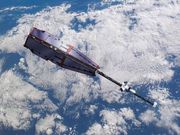
The European Space Agency is in the countdown phase to one of the highlights of its scientific year: the launch of its three-spacecraft Swarm mission to study the Earth's magnetic field in unprecedented detail.
[...]
The scientific objective is to better understand how the Earth's magnetic field is generated, how it varies around the globe and why this field that protects us from space weather appears to be weakening. To achieve that aim, ESA and prime contractor Astrium have had to employ some unusual design tricks.
As with all missions to space, Swarm must survive launch. But, says mission manager Rune Floberghagen, with all three identical 468kg craft closely packed to fit on one launcher, there is an additional risk of collision in the first few seconds after release.
Comment: At long last, some new info about this important mission... The comment about surviving launch is interesting, especially when we consider the number of recent failures.
Radar to monitor space weather unveiled
Defence Webs, 10th October 2013
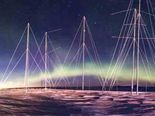
The South African National Space Agency (SANSA) has unveiled a new high-frequency digital radar that will be used to monitor space weather conditions.
The radar, which was revealed in Hermanus yesterday, forms part of the Super Dual Auroral Radar Network (SuperDARN), an international network of more than 30 radars used to monitor the dynamics of space weather.
SANSA Space Science communication officer, Catherine Webster, explains that, just as there is weather on earth, there is weather in space, and it can interfere with and cause damage to satellites which are relied on for communication, navigation, resource management, and national safety and security.
"Understanding space weather, a term used to describe the effects the sun has on earth and the planets of our solar system, is a global priority," says Webster. As host to the only Space Weather Centre in Africa, SANSA provides an important service to the nation by monitoring the sun and its activity to provide information, early warnings and forecasts on space weather conditions. [...]
SANSA Space Science MD, Dr Lee-Anne McKinnell, explains that communication and navigation technology, town planning, resource and disaster management are highly dependent on satellites operating in the space environment.
"Understanding this environment has become vital in order to protect technology in space and on earth from the devastating effects of space weather."
Comment: The language here is quite interesting... You would think the lives of hundreds of millions of people were in danger, even if they don't know it...
How the shutdown could impact scientist studying space weather at the South Pole
Washington Post, 10th October 2013

One of the many impacts of the government shutdown has been that the cancellation of the U.S. Antarctic Program for the year. The program, which is funded by the National Science Foundation, manages science research on the South Pole.
To get a better sense of what impact this will have on scientists whose research is supported by the program at the South Pole, we talked to C. Robert Clauer, who is a professor of space science at Virginia Tech and whose research in Antarctica is funded by the U.S. Antarctic Program. He told us about what life in Antarctica is like, what his research on space weather entails and what caretaker status means for scientists researching in Antarctica. [...]
The cold weather gear makes working outside very comfortable. In our case
we were installing equipment that would work autonomously over the year making measurements of magnetic disturbances that result from electrical currents in space and in the ionosphere above the station.
We also have an experiment to investigate disturbances to GPS satellite signals caused by ionospheric disturbances. This involves digging a hole in the snow to bury the electronics box and battery box, erecting a tower that holds solar panels and the antennas for our satellite data relay system and GPS experiment and deploying our sensors. [...]
The solar wind interacts with the Earth's magnetic field to produce an 'electromagnetic' weather around the Earth. The aurora or northern and southern polar lights are related to these phenomena. This weather now can affect much of the technology that we rely upon now – like communications systems, navigation systems, electrical power distribution, humans in space, air crews on polar transcontinental flights, and long distance pipelines.
It involves the development of the radiation belts, development of electrical currents that carry millions of amperes around the Earth and in the ionosphere.
Comment: There is no fudging the issue here... scientists are measuring big fat electric currents coming in from space.
US Space Weather Tracking Website Still Active Despite Government Shutdown
Space.com, 2nd October 2013
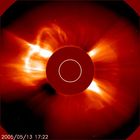
The U.S. government shutdown has broken the links to many federal websites, but a vital source of information about sun storms and their potential effects on Earth remains available.
The website of the Space Weather Prediction Center, an arm of the National Oceanic and Atmospheric Administration (NOAA), will continue to be maintained despite the shutdown, which began at midnight Tuesday (Oct. 1) when the Senate and House failed to agree on an emergency spending bill. The space weather center is currently tracking the solar fallout from a sun storm eruption earlier this week that is now arriving at Earth.
"Due to the federal government shutdown, NOAA.gov and most associated web sites are unavailable," NOAA officials wrote in an update today (Oct. 2). "However, because the information this site provides is necessary to protect life and property, it will be updated and maintained during the federal government shutdown." [
Comment: Well, space weather issues seem to be increasing exponentially at the moment... but protecting the world against the harsh reality of space weather is way beyond politics, now it is a matter of life and death on a very large scale... Anyway, this week I have been chewing the cud about the morons that crawled out from under their rocks and moaned about my book when it was first published in 2006... Rather a long time ago now... After spending well over a thousand hours and a considerable amount of hassle, I was accused of getting it wrong and I did not understand what was going on... etc etc. Well, time is the master as they say and look who got it wrong? I wonder if these same unthinking uneducated ignorant idiots will email the scholars at Oxford and Cambridge that belong to Oxford University's Future of Humanity Institute and tell them that they have got it wrong too... Actually, if anything, I think the brain-bots were too slow on the uptake... So, we had a Carrington Level near miss in July 2012, when will be the next near miss or even direct hit? But even if there is no direct hit in the near future, the red auroras after minor geomagnetic storms should be worrying a few... I think it is a sign that the state of our magnetosphere is worsening...
Formation of Unusual Ring of Radiation Around Earth Explained
Science Daily, 22nd September 2013
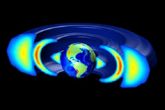
Since the discovery of the Van Allen radiation belts in 1958, space scientists have believed these belts encircling Earth consist of two doughnut-shaped rings of highly charged particles -- an inner ring of high-energy electrons and energetic positive ions and an outer ring of high-energy electrons.
In February of this year, a team of scientists reported the surprising discovery of a previously unknown third radiation ring -- a narrow one that briefly appeared between the inner and outer rings in September 2012 and persisted for a month. [...]
"This study shows that completely different populations of particles exist in space that change on different timescales, are driven by different physics and show very different spatial structures," Shprits said.
Comment: Its no surprise that space scientists are seeing new physics in space because the conditions in space have changed. There are many different reports of new types of high energy plasma manifestations. We know that we are seeing high energy manifestations because plasma physicists can easily demonstrate this in a laboratory setting to explain what can be seen in our own solar system and beyond.
Space Weather May Be to Blame for Some Satellite Failures
Science Daily, 16th September 2013
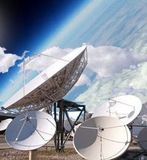
Is your cable television on the fritz? One explanation, scientists suspect, may be the weather -- the weather in space, that is.
Lohmeyer says a better understanding of space weather's effects on satellites is needed not just for current fleets, but also for the next generation of communications satellites.
"Users are starting to demand more capabilities," Lohmeyer notes. "They want to start video-streaming data, they want to communicate faster with higher data rates.
So design is changing -- along with susceptibilities to space weather and radiation that didn't used to exist, but are now becoming a problem."
Comment: I think the article is trying to say that space weather forecasting is providing a false sense of security because it is a lot more complicated than a solar flare, CME blast or a geomagnetic storm on Earth... The stop and think attribute does not work for many because most don't know how to think... Whatever, one day there will be a particularly bad geomagnetic storm and that it will be obvious that satellites have been affected when our technological modern world comes to a screeching halt... the only problem will be is that national power grids might be wiped out too... For the ignoranti who think this perspective is alarmist, I recommend re-reading the Russian Planetophysical Report (1998)
link where we were told in plain English what was happening in our solar system that was affecting our sun and every planet in our solar system.
Baffled boffins 'closer' to finding origins of extragalactic COSMIC RAYS
Uberbeams zap forth from deepest darkest space, says Delaware physicist
The Register, 2nd September 2013
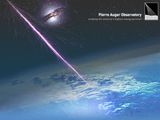
Scientists at the South Pole have moved a step closer to figuring out the origin point of the
cosmic rays which can damage electronics on Earth and zap astronauts in space.
The origin of the high-energy particles has been baffling boffins for decades, but the latest study, which uses data from the IceCube Neutrino Observatory at the South Pole, has uncovered new information about the rays at the level where Milky Way particles transition to extragalactic cosmic rays.
In our universe, cosmic rays are known to reach energies over 100 billion giga-electron volts (10,
11 GeV). The latest study covers the energy range from 1.6 times 106 GeV to 10? GeV, which is the interval where the transition from the rays in our galaxy to those produced outside is expected to occur.
Comment: Note the issue pointed out clearly here is the destruction of electronics...

PROTECTING OUR EARTH
Mapping the Earth's Magnetosphere to Predict and Prepare for Space-weather Events
University of Tennessee, 23rd August 2013

Although the sun seems harmless at a distance, it harnesses the potential to inflict serious damage on our planet. The sun is constantly blasting plasma – a sea of charged particles – in all directions into space at speeds of up to a million miles per hour or more.
This plasma, known as the solar wind, bombards Earth with massive amounts of protons, electrons and ionized atoms that can pose a serious threat to life, as we know it. If these particles were free to hit the planet, the radiation would cause life-threatening injuries to our DNA, and the massive influx of charged particles would debilitate power grids, disrupt communications networks and damage all electronic devices.
Solar activity has a direct impact on environmental conditions in near-Earth space – a concept known as space weather. Solar wind is not the only sort of activity that can affect us here on Earth. Solar flares are explosive storms that occur on the surface of the sun. These flares can emit bursts of charged particles with energy comparable to 10 million volcanic eruptions. The sun also occasionally emits coronal mass ejections, or CMEs – powerful, enormous eruptions of plasma from inside the sun's corona that are much more dangerous than solar wind or flares. CMEs can send up to 10 billion tons of the sun's plasma surging into our solar system. When hot plasma from CMEs strikes our planet, it can produce extreme space-weather events called geomagnetic storms, and these storms can cause catastrophic damage to Earth and its technological systems. [...]
CMEs pose a significantly greater risk to Earth than other potentially dangerous astronomical events. The likelihood of the sun emitting a CME depends on an 11-year solar cycle. During the peak of the solar cycle, the sun can emit several of them every day. At the minimum of the solar cycle, the sun may radiate only a couple per week. In the last 200 years, our planet has already experienced two geomagnetic storms intense enough to cost us billions, even trillions of dollars.
"There is an estimated 12-percent chance in the next 10 years of a solar storm of the magnitude of the 1859 Solar Superstorm hitting Earth," says Karimabadi. "That would cause over $2 trillion in damage." This amount is equivalent to a whopping 30 times the amount of damage caused by Hurricane Sandy in 2012, which cost the United States roughly $65 billion. [...]
"There is an urgent need to develop accurate forecasting models. A severe space-weather effect can have dire financial and national-security consequences, and can disrupt our everyday lives on a scale that has never been experienced by humanity before," Karimabadi explains.
A geometric storm on the magnitude of the 1859 superstorm narrowly missed our planet in July of 2012. If this particular CME had occurred a few days sooner, our planet would have suffered devastating consequences. Entire nations could be left without power for weeks if such a storm were to happen again.
Comment: Hmmmm.... check out the archives there was a lot of action in July 2012... Over the last nearly 9 years, I have been following the developing new scientific field of space weather prediction. Thus, it is fascinating to see that scientists have quickly abandoned lots of old theory in favour of plasma physics that models reality. After the struggle that early pioneers had pointing out the basic facts that our visible universe is 99.999% plasma that is dominated by the electromagnetic force, and should be treated as such, Space Weather is forcing a new understanding of our reality. What surprised me here is that scientists are using such language as PROTECTING OUR EARTH.... I am wondering if parts of this article are a tad alarmist coming from an academic institution, but I think people should be alarmed, as most are oblivious to the seriousness of the situation. Whatever, it is apparent, the citizens of planet Earth have entered a new cosmological era.
-
When Worlds Collide
Researchers harness Jaguar and Kraken to better understand solar storm/magnetosphere interaction
University of Tennessee, August 2013
30th August 2013: Update
I have decided to pin this because it looks like an amateur got this badly wrong and tried to claim we had a near miss in July 2013 when in fact it happened in July 2012, see
Space weather could now cause trillions in damage I have now found yet another relevant major space weather research paper for references and further details about what happened. Dr Tony Phillips at spaceweather.com had the opportunity to at least correct the error and failed see
SPACE WEATHER FACT CHECK:.... In a nutshell, that is the reason why I don't trust him or NASA... IT IS NOT WHAT NASA TELLS YOU THAT IS THE ISSUE, IT IS WHAT THEY WON'T REVEAL... THIS IS A PERFECT EXAMPLE. THE ANSWER IS DO YOUR OWN RESEARCH... see background info and links
About that almost 'Carrington Event' two weeks ago

Power Grid Down Drill To Be Conducted By US Government
Off The GridNews, 28th August 2013

Power grid vulnerabilities are finally garnering some attention by government officials.
An electrical grid joint drill simulation is being planned in the United States, Canada and Mexico. Thousands of utility workers, FBI agents, anti-terrorism experts, governmental agencies, and more than 150 private businesses are involved in the November power grid drill.
The downed power grid simulation will reportedly focus on both physical and cyber attacks.
The antiquated electrical system in the United States has been one of the most neglected pieces of integral infrastructure.[...]
The disaster drill is being described as a crisis practice unlike anything the real power grid has ever experienced. The GridEX II drill Nov. 13-14 will focus primarily on how governments will react if the electrical grid fails and, for instance, the food supply chain collapses.
Comment: THIS IS IMPORTANT.... THIS IS IMPORTANT....THIS IS IMPORTANT.
Finally, all the pieces of the puzzle are coming together.... As I have already stated before, the timing of November 2013 for this drill is to make sure that personnel are in place and aware of what they need to do in the event that Comet ISON causes a massive solar blowout. Check out the archives for previous comments, (use google search on the Home page or Archives Menu). We have seen tiny comets cause huge CMEs, but Comet ISON is in another league and we can guage just how electrically active it is when it flies by Mars. If we see huge electrical discharges between Mars and Comet ISON (like McCanney says might happen), then it will be time to start panicking especially for those in the United States who have no survival preparations and are worried. BY THE WAY, IGNORE THE HYPE FROM CONSPIRACY THEORISTS. THE GOVERNMENT MAY MAKE THE DECISION TO POWER DOWN THE GRID ANYWAY TO SAVE IT FROM BEING COMPLELELY DESTROYED... THE US GRID IS ESPECIALLY VULNERABLE BECAUSE IT IS ANTIQUATED, SO THIS ACTION COULD AMOUNT TO TAKING NECESSARY PRECAUTIONS. OTHERWISE IT IS TAKING THE RISK OF THE GRID BEING PARTIALLY OR COMPLETELY DESTROYED AND A HUNDRED MILLION PLUS PEOPLE DYING WITHIN 2 YEARS. THIS IS NOT HYPE, WE ARE FACING A POSSIBLE MEGA DISASTER.
31st August 2013: Update
What if the U.S. government already know that in the event of a knockout blow [category 5 geomagnetic storm] they can't save the national power grid? A Carrington level event means the national power grid gets destroyed in lots of different locations at once and no matter what they do there is going to be severe consequenes... Over the years I have pointed out the concern about worsening space weather, the facts are evident, but I think Comet ISON is literally a trigger. We are facing a potential mega disaster because the Sun is blowing out huge CMEs when any tiny comet approaches, but Comet ISON is already considered to not be a normal comet and the lack of clear images from astronomical sources is also an issue, see this excellent website,
Comet ISON News. It is interesting that those involved in the disinformation campaigns that promoted non-issue comets like Comet Elenin are now fairly quiet. Presumably these people were paid to cry wolf but it's almost like they don't realise that they have been played... What can you say about people who are so stupid? The U.S. government realise there is a huge risk but most people are just too wrapped up in trivialities to understand the issues. Nothing has changed, scientists say a Carrington level event is inevitable and there is a 12 percent chance of Earth experiencing an enormous megaflare erupting from the Sun in the next decade but they also state they are not taking into account long-term space climate change... My work has been about providing the proof that we are seeing dramatic change being driven by the new cosmic environment... Previous civilisations have been destroyed by cosmic conflagrations and humanity are at the next make or break point... Sigh....
Why we face grave danger from space
The discovery that a colossal solar flare hit Earth in the Dark Ages reminds us that catastrophe could strike at any time, says Michael Hanlon
The Telegraph, 13th August 2013
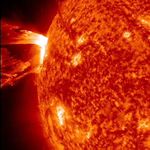
[...]
But in recent decades, it has become clear that our cosmic neighbourhood, in more recent times, has not been as benign as was thought. In the 1980s, for example, it was confirmed that Earth has been hit several times in its history by objects from space – none big enough to sterilise the planet completely, but a handful packing enough of a punch to change the course of life forever. The most famous of these was our collision with a six-mile-wide asteroid 65 million years ago, whose fiery passage into the Mexican coast has been blamed for killing off, or at least delivering the coup de grâce to, the dinosaurs.
It is not just rocks we have to worry about. Japanese scientists have uncovered evidence from the study of tree rings that in the year 775 the Earth was hit by a colossal solar flare. The scientists found a spike in radioactive carbon-14, taken up by the ancient cedar trees they were studying. In Finland, Ilya Usoskin and his colleagues found an identical spike on the other side of the world. One theory is that this was caused by a nearby exploding star – a supernova – showering the Earth with radiation.
Comment: Space scientists are telling us that we are facing space climate change... The cosmic environment and even spacetime (aether) has changed by becoming more permeable to charge.... This means when Earth gets huge electric shocks in the form of a massive solar euruption, the 'zap' is far more effective, see archives for more background info.
U.S. Air Force to shut down 'Space Fence' surveillance system
Yahoo News, 12th August 2013
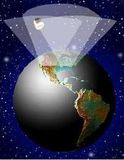
WASHINGTON (Reuters) - The U.S. Air Force will shut down its space surveillance system that tracks satellites and other orbiting objects by October 1 due to budget constraints caused by automatic federal budget cuts known as the sequestration, it announced Monday.
Deactivating the system by October 1 would save the Air Force Space Command $14 million annually starting in fiscal year 2014.
The surveillance system got the nickname "Space Fence" because it transmits a "fence" of radar energy vertically into space that can detect any object or debris that crosses it without being cued to do so.
Commander of the Air Force Space Command, General William Shelton, said the system - which has been in operation since 1961 - was outmoded and that newer technology will provide more accurate observations.
Comment: The real issue is the number of meteors and huge amount of space junk falling into our atmosphere due to the changing cosmic environment and severe space weather affecting the atmospheric drag of the vast hurricane of junk swirling around our planet.
Satellite positioning-data are vital–but the signal is surprisingly easy to disrupt
The Economist, 28th July 2013
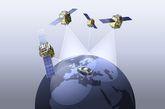
[...]
Malfunctioning satellites and natural interference from solar activity have hit GPS signals and sent ships off course. David Last, a navigation expert, says an accidental power cut, perhaps caused by a jammer taken on board a car ferry, could cause a shipwreck. Generating a false signal–spoofing–is another threat. In December 2011 Iran said it had spoofed an American drone before capturing it (most experts dismiss the claim). So far effective spoofing seems confined to laboratories, but Mr Last says some governments are already taking countermeasures.
Comment: Have you noticed the rising number of panicked reports about the risk posed by relying on GPS? The U.S. military have been warning for years (see archives), but the number of cases of ships, tankers and submarines crashing suggests something is going wrong and folk are sounding the alarm. Yet, if you look, there are now many technical reports suggesting space weather is the best hacker, see archives... Our cosmic reality has clearly changed. There are new terms and conditions for living on planet Earth.
-
Researchers show how a major GPS flaw could allow terrorists and hackers to hijack commercial ships and planes
Daily Mail, 28th July 2013
Interestingly, this Daily Mail version based on a Fox News article carefully leaves out any mention of solar activity. It really seems great efforts are made to keep certain American audiences in the dark...
-
UK eLoran Roll-out to Back up Vulnerable GPS
Hydro International, 17th July 2013
 The UK claims to be the first in the world to deploy this technology for shipping companies operating both passenger and cargo services. The roll-out, led by the General Lighthouse Authorities (GLAs) of the UK and Ireland, will replace the equipment in two prototype stations at Dover and Harwich, and five new stations will be deployed in the Medway, Humber, Middlesbrough, Firth of Forth, and Aberdeen. The GLAs have contracted UrsaNav Inc. for the deployment to deliver initial operational capability by Summer 2014.
The UK claims to be the first in the world to deploy this technology for shipping companies operating both passenger and cargo services. The roll-out, led by the General Lighthouse Authorities (GLAs) of the UK and Ireland, will replace the equipment in two prototype stations at Dover and Harwich, and five new stations will be deployed in the Medway, Humber, Middlesbrough, Firth of Forth, and Aberdeen. The GLAs have contracted UrsaNav Inc. for the deployment to deliver initial operational capability by Summer 2014.
Seven differential eLoran stations will be installed along the south and east coasts of the UK, following approval by the Department for Transport. The stations will provide alternative position, navigation and timing (PNT) information to ensure that ships equipped with eLoran receivers can navigate safely in the event of GPS failure in one of the busiest shipping regions in the world. [...]
Longwave Radio Signals: ELoran technology is based on longwave radio signals and is independent and complementary to GPS. The General Lighthouse Authorities carried out the world's first successful demonstration of a prototype automatic resilient PNT (positioning, navigation and timing) system using eLoran, in trials completed aboard the THV Galatea out of Harwich on several excursions between 28 February and 1 March 2013. Full operational capability covering all major UK ports is expected by 2019.
Comment: In less than 20 years, we have gone from GPS being accurate to within 1 metre to at times being tens of metres off and thus worse than useless due to space weather roiling the ionosphere. So, it seems the UK authorities are getting on and dealing with the issues with new solutions.
NASA Probes Reveal Source of Particle Acceleration in Van Allen Radiation Belts
Sci Tech Daily, 26th July 2013

Scientists have discovered a massive particle accelerator in the heart of one of the harshest regions of near-Earth space, a region of super-energetic, charged particles surrounding the globe called the Van Allen radiation belts. Scientists knew that something in space accelerated particles in the radiation belts to more than 99 percent the speed of light but they didn't know what that something was. New results from NASA's Van Allen Probes now show that the acceleration energy comes from within the belts themselves. Particles inside the belts are sped up by local kicks of energy, buffeting the particles to ever faster speeds, much like a perfectly timed push on a moving swing.
Comment: This is another report with a convoluted and part gibberish explanation to avoid mentioning INTENSE ELECTRIC FIELDS operating inside the Van Allen radiation belts cause particles to accelerate to near the speed of light. That is how particles are accelerarted to near light speed in a particle accelerator, see
What is a particle accelerator?. Lets make this clear. Satellites are being regularly flash fried with intense radiation and too many failing satellites is a big problem for our modern technological world that relies heavily on satellite technology.

Met Office adds space weather to its forecasting
Following the recognition of 'space weather' as a major risk to UK national security, the Met Office is using big data to predict solar events
Guardian News, 23rd July 2013

Solar flares and coronal mass ejections (CMEs) will now form part of the Met Office's forecasting, as the result of a joint project between UK and US weather and science agencies.
Data collected by the Met Office, the British Geological Survey, NASA and the US National Oceanic and Atmospheric Administration (NOAA) will be combined, and then analysed collaboratively by forecasters.
The move follows the inclusion of "severe space weather" in the National Risk Register, an document published annually by the Cabinet Office that sets out major risks to UK national security as defined by likelihood and potential severity. [...]
"We're now running our own version of the CME prediction model - called Enlil - which is running on a supercomputer in Exeter.
"Once a CME has been emitted, we can run a forecast model to try and predict how large it is, when it might arrive with us, what its polarity will be, and therefore trying to give an estimate of whether it's going to be catastrophic or whether it will bounce off the magnetosphere and not affect us at all", said Tomkins.
-
Met Office uses MongoDB to predict space weather
IT PRO News, 25th July 2013
[...] "With it being on the Risk Register, they needed to find a risk owner, and the Met Office was deemed to be the best place to work with NASA and develop the kind of predictive capability that we have for terrestrial weather," said Tomkins.
Currently, space weather prediction is in its infancy and particularly with events such as solar flares, which travel at the speed of light, all that can be done is to notify governments and satellite operators that it is happening, how severe it is likely to be, and how long it is expected to last.
It is hoped the Met Office programme, which brings together data from NASA, NOAA, the UK Space Agency, and the British Geological Survey, will accelerate the development of improved space weather models and predictions.
Fredericton researchers map weather in space
Pair expanding network in the Arctic
CBC News, 21st July 2013

Two Fredericton researchers are on a whirlwind tour of Canada's north to learn more about space weather.
Physics technical officer Todd Kelly and colleague Richard Chadwick are off to the Arctic to expand the Canadian High Arctic Ionospheric Network. The C.H.A.I.N. is a series of transmitters and receivers that monitor and measure weather and different signal levels around 85 and 500 kilometres above the earth.
"They are used to monitor the ionosphere," explained Chadwick. "We're monitoring changes in electron density. It can interfere [with] or enhance communications. So it's an issue for communications with satellites or over-the-horizon communications, or airplanes. Those kinds of things." [...]
The data collected from high in the earth's atmosphere is then sent to the University of New Brunswick's large server system in a climate controlled room. There the information is processed, mapped, and made available to over 180 different clients from across the globe.
Their clients, including airlines and the Department of National Defense, rely on the constantly updated maps to plot routes through the Arctic without having communications cut out.
Comment: This is a surprise... I did not know airlines have to plot their routes in order to dodge radio communication blackout spots as standard practice... Presumably, this is not new, but the situation is getting far worse....

The space weather way forward
Science Omega, 18th July 2013
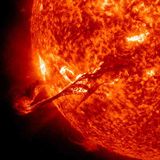
In the United States, the National Oceanic and Atmospheric Administration's (NOAA) National Weather Service (NWS) is going through a historic transformation that is refocusing the most advanced government weather agency in the world. The US weather agency has identified a new vision to build a 'Weather Ready Nation' (WRN) that will result in improved services to partner agencies at the federal and state levels. Over the past several years the US and indeed the world has seen an increase in extreme weather and climate conditions that have broadly affected people, infrastructure and commerce. As our climate continues to change, these extremes will only increase over time, making the need for adaptation, readiness, response and recovery rise to new levels of importance – not just on a national level, but around the world. [...]
Space weather describes the conditions in space that affect Earth and its technological systems. To provide impact-based warnings effectively, space weather 'forecasts' must provide some reaction time to those whose lives and livelihoods are vulnerable to the effects of solar activity.
Unfortunately, the state of space weather observations and forecasts today is at the same technical level weather forecasting was 20-30 years ago. We simply do not have the density of observations needed to rapidly improve the modelling and forecasting of solar activity. [...]
Space weather is a global concern and does not recognise national boundaries.
In 2011, the White House encouraged collaboration between the US SWPC and the UK Met Office to create a 24/7 space weather forecast office and build capacity with other international partners establishing the first fully operational global space weather warning system.1 Armed with this data and impact-based alerts, decision-makers in the communities of aviation, GPS navigation, power and satellite communications will be able to make informed and timely decisions in preparation and response to space weather events saving time, conserving resources and protecting infrastructure. To enable this global sharing of space weather products, data and services, the right collaborative technologies must be at the ready.
Comment: I think we can call this a space weather prediction status briefing report. Here we are being told that world controllers have been blindsided by the sudden onslaught of space weather. Well, I think the evidence tells us ancient astronomer-priests made great effort to preserve the knowledge of long cosmic cycles and dramatic changes that impact life on Earth. The problem is very few people are interested in reality and world controllers are only interested now because they realise the status quo they have created is threatened and ultimately they could lose control of the current technological world that has been created.
Space weather could now cause trillions in damage
Today, electric utilities, telecommunications providers and the insurance industry are grappling with a scary possibility: a solar storm that would wreak havoc on power grids, pipelines and satellites.
Seattle Times, 14th July 2013

[...] The possibility of apocalypse has piqued scientific interest in solar storms in recent years. But researchers are now realizing that space weather can cause all sorts of lesser mischief, such as disorienting GPS satellites or severing contact between polar flights and air-traffic control.
So, in recent years, scores of businesses and government agencies are starting to take space weather more seriously. Electric-grid operators are devising plans to reroute currents through their systems to brace for solar storms. Airlines such as Delta have developed plans to reroute flights in the case of emergency. The U.S. military has begun to realize that space-weather blips can disrupt communication in the heat of battle.
But preparing for disruptions isn't easy. Just as interest in space weather is surging, the United States is facing the loss of key monitoring satellites in the coming years because budget cuts mean that aging systems aren't being replaced. And scientists are rushing to plug troubling gaps in their knowledge about these storms.
The problem is far from theoretical. Last month, at a conference on space weather in Silver Spring, Md., Daniel Baker of the University of Colorado announced that the sun had unleashed another large coronal mass ejection in July 2012 that traveled at speeds comparable to the Carrington Event of 1859. It missed the Earth by a week.
"Had that storm occurred a week earlier, it would have been a direct hit," Baker said. "And we'd probably be having a very different conversation about this today."
Comment: Hmmm.... I did not know about the incident in Afghanistan in 2002 and I am someone who keeps a close ear to the ground too...
SOLIS observatory gives new insights into space weather
Phys.org News, 11th July 2013
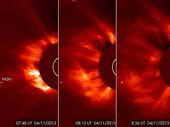
(Phys.org) –Shifts in the magnetic field just above the surface of the Sun lead to liftoff of interplanetary "space storms," according to new results from the Synoptic Optical Long-Term Investigation of the Sun (SOLIS) instrument. The results were presented by California State University, Northridge, physics and astronomy professor Debi Prasad Choudhary at this week's 44th meeting of the Solar Physics Division of the American Astronomical Society in Bozeman, Mont.
Understanding space weather and the enormous "storms" that cause it, called coronal mass ejections (CMEs), is a major goal of current solar research. SOLIS, built by the National Solar Observatory and operated at Kitt Peak, Ariz., is a special-purpose telescope that can image the magnetic field at the surface of the Sun and, simultaneously, in the layer just above the surface, called the "chromosphere."
-
Why space weather matters
Washington Post, 10th July 2013
The volatile surface of the sun is responsible for "space weather" that can affect Earth. Our atmosphere and magnetic field protect what's below it from almost all such events, so solar weather went unnoticed until 1859. However, humans and their technology did not stay on the ground, making us increasingly vulnerable to the unpredictabilities of the sun.
Comment: This is just a good graphic.
Space weather forecast study turns table of effective predictions on its head
Earth Sky News, 5th July 2013

A comparison of solar flare forecasting systems has turned the performance table of apparently effective prediction methods on its head.
Researchers at Trinity College Dublin, Ireland, have tested the reliability of seven techniques against their record of predicting flares and non-flare events correctly, as well as their history of missed flares and false alarms. When the predictions were put into context of the Sun's activity levels over time, some of the most seemingly successful techniques slid down the table. Dr D. Shaun Bloomfield is presenting the findings at the RAS National Astronomy Meeting in St. Andrews, Scotland. [...]
Bloomfield and his colleagues compared seven different systems for predicting solar flares: two of these used images showing the structure of sunspots; the other five used a variety of parameters relating to the magnetic field, including maximum field strength, total flux and strengths of gradients. The source data came from a range of ground based and space based solar telescopes, including SOHO.
Comment: Due to the arrival of space weather as a serious issue, space weather prediction is a completely new field of science. Thus, it is good to know that solar scientists are getting on with this important task.
Cluster spacecraft detects elusive space wind
Earth Sky, 2nd July 2013
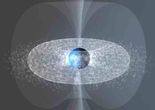
A new study provides the first conclusive proof of the existence of a space wind first proposed theoretically over 20 years ago.
By analyzing data from the European Space Agency's Cluster spacecraft, researcher Iannis Dandouras detected this plasmaspheric wind, so-called because it contributes to the loss of material from the plasmasphere, a donut-shaped region extending above the Earth's atmosphere. The results are published today in Annales Geophysicae, a journal of the European Geosciences Union (EGU).
"After long scrutiny of the data, there it was, a slow but steady wind, releasing about 1 kg of plasma every second into the outer magnetosphere: this corresponds to almost 90 tonnes every day. It was definitely one of the nicest surprises I've ever had!" said Dandouras of the Research Institute in Astrophysics and Planetology in Toulouse, France.
Comment: Again, we see that plasma cosmology is creeping towards a new level of acceptance but I don't think the terminology is acceptable to plasma cosmologists.... 'plasmaspheric winds' tend to be flows of charge which by definition are electric currents.
New Program Aims To Understand Effects Of Space Weather
Red Orbit, 1st July 2013
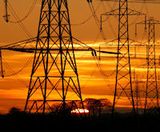
Scientists are working on a program to better understand how national grids could be affected by space weather.
British Geological Survey (BGS) researchers are conducting continuous measurements of the background electric field in the UK to better understand how the UK National Grid can be interrupted by the Sun. Space weather can take place when the ejection of material from the Sun, or coronal mass ejection (CME), shoots towards Earth.
There is a continuous flow of natural electricity through the rocks and soil in the ground that is created by changing magnetic fields in outer space and in the atmosphere. Under certain conditions, space weather can interact with the Earth's magnetic field causing it to change and create strong electric currents higher in the atmosphere. This reaction can create induced currents in the ground as well.
Comment: It is good to know that UK engineers are getting on with trying to secure the nation against extreme space weather. I appreciate the effort.
State makes it law to harden grid against EMP
Strategy encourages others to take similar precaution
WND Weekly News, 17th June 2013

WASHINGTON – Maine has become the first state in the nation to pass legislation ordering its grid to be hardened against an electromagnetic pulse, or EMP, event, according to report from Joseph Farah's G2 Bulletin.
The law not only requires preparation against a natural or man-made EMP, it encourages other states to take a similar initiative, since the federal government has refused to make the potential for an EMP event a priority.
The "Act to Secure the Safety of Electrical Transmission Lines" was introduced by Maine Representative Andrea Boland, D-Sanford.
The U.S. Federal Energy Regulatory Commission, or FERC, had promised that if the legislation became law it would provide Maine with a study of the most cost-effective options to protect the Maine electric grid from an EMP, free of charge. [...]
"This is the first major success for those who have been fighting to get grass roots Americans to take this existential threat seriously and to deal with it," said former Ambassador Henry Cooper, the first director of the Strategic Defense Initiative under then President Ronald Reagan.
Comment: Progress...
Doing something about space weather
Canada Free Press, 17th June 2013
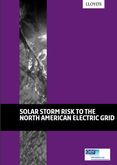
A wit once observed a persistent truth: "Everybody talks about the weather, but nobody does anything about it." That has been especially the case with respect to "space weather" – a phenomenon associated with intense solar activity, known by scientists as coronal mass ejections and popularly as solar flares. If oriented in the wrong direction, one of these flares could blanket much of the earth with devastatingly powerful bursts of energy known as electromagnetic pulse (EMP). [...]
The latest study of our vulnerability to EMP from space weather was conducted for Lloyds of London by Atmospheric and Environmental Research. It set out to assess what would happen if we were subjected to solar flaring comparable to that of an 1859 sun storm known as the Carrington Event – the sort of severe space weather that seems to occur roughly every 150 years. (That would put us approximately four years overdue for such an event.)
The researchers appear, however, to have used levels of sun-induced EMP closer to those associated with a 1989 space storm that took down the Quebec grid in ninety-seconds. These involved electromagnetic pulses that were actually four-times less powerful than those first correlated a century-and-a-half ago by British scientist Dr. Richard Carrington with fires in telegraph stations and lines across the northern latitudes of his country and ours.
Even so, the Lloyds-AER team's conclusions were bad enough.
Comment: Well, I suppose it is a relief that there are a few intelligentsia who are actually interested in reality. Folk who are who are not swayed by popular culture for dumb people and who realise there is a distinct possibility that they could wake up one morning and find out that a hundred million people have had the mechanism for electricity supplies destroyed. These intelligent people can actually think ahead and plan to make our world a safer place rather than embrace ignorance, total chaos and catastrophe.
The biggest threat to the global economy could come from outer spaceQuartz, 12th June 2013
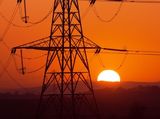
Imagine waking up just after midnight to a sky so bright you swear it must be early morning. Imagine seeing the Northern Lights as far south as Cuba or Hawaii. Imagine that the same phenomena behind both has also generated electric fields in the ground strong enough to power small electronics. That's what happened in 1859, when the earth was struck by the most severe geomagnetic storm ever recorded.
Forget asset bubbles, recessions, or hurricanes–space weather could prove far more economically harmful. A severe geomagnetic storm–a sudden, violent eruption of gas and magnetic fields from the sun's surface–could prove particularly devastating. If the 1859 storm, known as the "Carrington event," were to recur today it could cause trillions of dollars in economic damage and take years to recover from, according to estimates. The sun would sneeze and the economy could shatter.
Comment: I am so glad that many parts of the mainstream media have some interest in reality...
Space Storm Could Black Out US East Coast for Two Years - Expert
RIA NOVOSTI News, 5th June 2013

WASHINGTON, June 4 (by Karin Zeitvogel for RIA Novosti) –
Severe space "weather" can knock out satellite communications and GPS systems, expose space tourists and astronauts to dangerous levels of radiation, and even cause massive blackouts on Earth that could last up to two years, scientists and NASA officials warned at a conference here on Tuesday.
A sun storm on the scale of one that happened in 1859, which was recorded by British brewer and amateur astronomer Richard Carrington, would potentially have sweeping consequences on huge population clusters in the United States, experts at the Space Weather Enterprise Forum said.
"The United States population that is at risk of an extended power outage from a Carrington-level storm is between 20-40 million, with an outage duration of possibly 16 days to one to two years," said Kathryn Sullivan, the first woman to walk in space and now the acting administrator of the National Oceanic and Atmospheric Administration (NOAA), which hosted Tuesday's conference. [...]
"Space weather is not science Fiction, it is an established fact," the Lloyds report said.
Comment: Well, I think the issue is: how do you reach people who are heavily conditioned or brainwashed into the belief that electricity is almost always available at a flick of a switch? Space weather experts realise that Earth's defenses are weak and deteriorating fast whilst an extreme solar storm is likely some time soon where a hundred million people (at least) could face the reality of no electricity available for two years. We live in a world where many people like to delude themselves and think positively. Others prefer to think about themselves and their own retirement funds but these folks can't comprehend that their retirement funds mean nothing when all the computer systems locally are inoperable as well as everything else... I am even wondering about the recommendation for people to think when society as a whole encourages people to react to threats rather than be proactive.... Well, an attempted knee-jerk reaction after an apocalyptic blow-out from the Sun will be too late. Due to the inertia, at this moment, the belief that a huge percentage of people will die seems most likely.

Severe space weather event could have huge effect on insurance industry: Lloyd's
Canadian Underwriter News, 4th June 2013

A severe space weather event that causes major disruption to the electricity network in North America could have major implications for the insurance industry, according to Lloyd's.
In Solar Storm Risk to the North American Electric Grid, Lloyd's reports that between 20-40 million Americans are at risk of an extended outage, with durations up to one to years, from a Carrington-level, extreme geomagnetic, storm.
"The knock-on effects of loss of electricity are very difficult to quantify, but given the fact that our society is increasingly dependent on electricity they are likely to be severe and wide-ranging," according to the report.
Insurers could be exposed to significant business interruption claims in the event that businesses, public services and households are without power for a sustained period of time. This would be more so as backups are likely to last for a limited period, the report cautions.
Comment: Here Lloyd's point out that our world is already overdue for an extreme solar storm 'Carrington Event'. There is nothing really new here, but I think world controllers realise that they have to keep putting out the press releases in the hope that a few more folk will be aware that we could face a sudden apocalyptic disaster and societies are generally not prepared. Personally, I think new solutions are needed. Currently, our modern technological world is in a vulnerable state and society is being forced to play Russian roulette with the Sun. The obvious target is decentralised power grids and new forms of power supply, but of course there is huge resistant to change.
Solar Storm Risk to the North American Electric Grid (.pdf)
Lloyd's, May 2013
The report, which was produced in collaboration with the Atmospheric and Environmental Research (AER), examines the impact of solar storms on North America's electric grid. By developing a model with the latest information on surface disturbances from geomagnetic storms and using storm simulations, the report quantifies the risk of space weather to North America.
This report is 21 pages long but the Executive Summary is less than 1 page.
Executive Summary
A Carrington-level, extreme geomagnetic storm is almost inevitable in the future. While the probability of an extreme storm occurring is relatively low at any given time, it is almost inevitable that one will occur eventually. Historical auroral records suggest a return period of 50 years for Quebec-level storms and 150 years for very extreme storms, such as the Carrington Event that occurred 154 years ago.
The risk of intense geomagnetic storms is elevated as we approach the peak of the current solar cycle. Solar activity follows an 11-year cycle, with the most intense events occurring near the cycle peak. For the current Cycle 24, the geomagnetic storm risk is projected to peak in early 2015.
As the North American electric infrastructure ages and we become more and more dependent on electricity, the risk of a catastrophic outage increases with each peak of the solar cycle. Our society is becoming increasingly dependent on electricity. Because of the potential for long-term, widespread power outage, the hazard posed by geomagnetic storms is one of the most significant.
Weighted by population, the highest risk of storm-induced power outages in the US is along the Atlantic corridor between Washington D.C. and New York City. This takes into account risk factors such as magnetic latitude, distance to the coast, ground conductivity and transmission grid properties. Other high-risk regions are the Midwest states, such as Michigan and Wisconsin, and regions along the Gulf Coast.
The total U.S. population at risk of extended power outage from a Carrington-level storm is between 20-40 million, with durations of 16 days to 1-2 years. The duration of outages will depend largely on the availability of spare replacement transformers. If new transformers need to be ordered, the lead-time is likely to be a minimum of five months. The total economic cost for such a scenario is estimated at $0.6-2.6 trillion USD (see Appendix).
Storms weaker than Carrington-level could result in a small number of damaged transformers (around 10-20), but the potential damage to densely populated regions along the Atlantic coast is significant. The total number of damaged transformers is less relevant for prolonged power outage than their concentration. The failure of a small number of transformers serving a highly populated area is enough to create a situation of prolonged outage.
A severe space weather event that causes major disruption to the electricity network in the US could have major implications for the insurance industry. If businesses, public services and households are without power for sustained periods of time, insurers may be exposed to business interruption and other claims.and other claims.
Comment: I had to think about this but I suppose the super rich and elite will just get on their private jets, (even if air traffic control is still very dangerous due to poor geomagnetic conditions and satellite comunications are a bit hit and miss), but they should be able to reach a place of relative safety and then initiate their plans... Hence, these types would probably already their own and very different survival plan to most ordinary people.

NASA: Space's weather a new hurdleSolar and magnetic storms can wreak havoc if a surprise
Florida Today, 4th June 2013
 SILVER SPRING, MD – For about two weeks in March 2012, powerful solar flares pounded the Earth with a series of geomagnetic body blows.
SILVER SPRING, MD – For about two weeks in March 2012, powerful solar flares pounded the Earth with a series of geomagnetic body blows.
More than a dozen NASA spacecraft experienced data outages or had to be rebooted, and there were fears the space storm would disrupt power networks, commercial aviation and communications systems.
The space agency scrambled to minimize the damage to its space vehicles, even as the potentially dire consequences to the planet's electronic and industrial grid never materialized.
But scientists describe the episode as a wake-up call.
Comment: I am wondering how many wake-up calls we have had now....
Noctilucent Clouds Get an Early Start
NASA Science News, 7th June 2013

[...] News flash: This year, NLCs are getting an early start. NASA's AIM spacecraft, which is orbiting Earth on a mission to study noctilucent clouds, started seeing them on May 13th. [...]
"It turns out that meteoroids play an important role in the formation of NLCs," explains Hampton University Professor James Russell, the principal investigator of AIM. "Specks of debris from disintegrating meteors act as nucleating points where water molecules can gather and crystallize."
This diagram shows why NLCs are best seen at sunset or sunrise. Click to view the full-sized diagram.
NLCs appear during summer because that is when water molecules are wafted up from the lower atmosphere to mix with the "meteor smoke." That is also the time when the upper atmosphere is ironically coldest. [...]
The early start of the 2013 season appears to be caused by a change in atmospheric "teleconnections."
"Half-a-world away from where the northern NLCs are forming, strong winds in the southern stratosphere are altering global circulation patterns," explains Randall. "This year more water vapor is being pushed into the high atmosphere where NLCs love to form, and the air there is getting colder."
Comment: This report from NASA informs us that climate change is being driven by a new cocktail of atmospheric parameters and that more noctilucent clouds are a visible sign. The term "teleconnections" is hermetic, since we are not talking about telephone wires here, it seems NASA scientists still don't want to fully acknowledge the role Earth's electromagnetism in driving weather systems and global circulation patterns. Whatever, we are being told that space weather in the form of meteoroids (cosmic dust from meteors) are creating dramatic and largescale atmospheric changes that are being linked to climate change.
Solar storm could leave Britain without power 'for months'
The risk of a catastrophic solar storm that would leave countries including the United Kingdom and United States without electricity for days or even months will peak in 2015, a new report claims.
Telegraph, 7th June 2013

The study, a joint venture from researchers at Lloyd's of London and Atmospheric and Environmental Research (AER) in the United States, details a dystopian scenario where a shortage of electrical transformers would leave Western nations without electricity for months because of the time needed to build replacements.
A solar storm occurs when magnetic fields "loop" out of sunspots, releasing huge amounts of energy. These bursts of "plasma", a superheated, electrically-charged gas, could enter the Earth's own magnetic field and eventually disrupt networks dependent on electricity on the ground.
Huge surges of electricity flowing unexpectedly into telephone lines, the National Grid and transport networks would overwhelm them, resulting in widespread power failures.
Comment: I would like to point out that the Lloyd's report focuses on the United States and the only mention of the UK is the following reference.
"The insurance industry often plans for and is regulated in certain countries (in the UK for example) to hold capital for 1 in 200 year events. Given the difficulties of estimating probabilities for extreme events, it could be argued that the grid network, including transformers, should aim to protect society to at least a level of 1 in 250 years. This would allow a tolerance for error."
Actually the lack of interest in the UK goes as far as the Lloyd's report not even bothering to cite the UK Royal Academy of Engineering's 70-page February 2013 report
Extreme space weather: impacts on engineered systems and infrastructure, is available at
www.raeng.org.uk/spaceweather (.pdf). The Royal Academy of Engineering report needs to be read in context, but it does say the following:
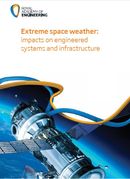 "UK studies that are still on-going, sponsored and undertaken by
National Grid indicate that a Carrington-level event could have
a significant impact. The current worst case estimates are for
some local blackouts lasting a few hours as a result of increases
in demand for local reactive power. National Grid has a well established
plan for this type of event, whether or not caused by
space weather, and the plan is rehearsed regularly. It is estimated
that, for a prolonged storm with maximum rate of change of the
geomagnetic field of 5000 nT/min, around six grid transformers
in England and Wales and a further seven grid transformers in
Scotland could be damaged and taken out of service. This number of
failures is within the capacity of National Grid's transformer spares
carrying policy to replace sufficient transformers to restore demand.
The time for an emergency transformer replacement, when a spare
is available, would normally be 8 to 16 weeks although the record
is four weeks. A significant delay can be the time required to get
permission to transport the spare transformer on the road, and in
the event of a severe event it is hoped that priority would be given
to allow transport to occur more rapidly."
"UK studies that are still on-going, sponsored and undertaken by
National Grid indicate that a Carrington-level event could have
a significant impact. The current worst case estimates are for
some local blackouts lasting a few hours as a result of increases
in demand for local reactive power. National Grid has a well established
plan for this type of event, whether or not caused by
space weather, and the plan is rehearsed regularly. It is estimated
that, for a prolonged storm with maximum rate of change of the
geomagnetic field of 5000 nT/min, around six grid transformers
in England and Wales and a further seven grid transformers in
Scotland could be damaged and taken out of service. This number of
failures is within the capacity of National Grid's transformer spares
carrying policy to replace sufficient transformers to restore demand.
The time for an emergency transformer replacement, when a spare
is available, would normally be 8 to 16 weeks although the record
is four weeks. A significant delay can be the time required to get
permission to transport the spare transformer on the road, and in
the event of a severe event it is hoped that priority would be given
to allow transport to occur more rapidly."
The Executive Summary is only 3 pages, but presumably reporters at The Telegraph are not in a position to keep on top of developments.
Officials Meet in Washington to Discuss Solar Storms, Great and Small
NASA Science News, 5th June 2013

[...]
The theme of this year's SWEF recognizes that space weather is ever-present. The gaps between big events are not empty times of quiet. They are filled with lesser storms that can pose a threat to our increasingly high-tech society.
Air travel is a good example. At the meeting, Thomas Fahley and Gregg Scott of Delta Airlines will detail how solar flares and radiation storms caused multiple flights to be redirected away from the poles during 2012. To avoid communications blackouts and high-energy radiation, which are concentrated around the poles during solar storms, more than 16 transcontinental flights were detoured to more southerly latitudes. [...]
Space weather affected the airlines in 2012 despite the fact that solar activity was relatively low. There were only a handful of X-class solar flares during the 12-month period. And while magnetometers counted more than two dozen geomagnetic storms in 2012, the vast majority were minor. Earth's magnetic field did not experience extreme storming even once.
However, the statistics of muted solar activity conceal an underlying potency. Lika Guhathakurta, the head of NASA's Living with a Star Program at NASA Headquarters, put it into perspective:
"Who needs an X-flare?" she said. "Small flares are powerful, too. They explode with as much energy as a billion atomic bombs dozens to hundreds of times every year. We feel their effects even when they don't make the news." Guhathakurta pointed out that our society relies more than ever on high-tech devices such as GPS, telecommunications satellites and smart power grids. "This makes us increasingly vulnerable to solar storms, great and small."
The sun is currently near the peak of Solar Cycle 24, but so far the strongest storms have missed Earth.
Comment: Real change for the citizens of planet Earth.
Space Weather Forecast: Blackouts with a Chance of Business Interruption
PropertyCasualty360, 6th June 2013

Solar activity predicted to peak in early 2015 may release powerful geomagnetic energy that can disrupt electric grids, causing widespread blackouts and disrupting markets, says Lloyd's of London.
"One of the reasons that we are interested in activity on the sun in 2015 is that it has the potential to cause more damage now due to our increasingly complex electric systems and rapidly rising dependence on electricity," Neal Smith, emerging risks and research manager at Lloyd's, tells PC360.
The insurance implications would start with contingent business interruption (CBI) claims, says Lloyd's in its report. Although standard CBI policies usually require evidence of physical damage to equipment, it might apply if transformers were to explode because of space weather. [...]
Smith says, "The aim of the report, as with many rising risks, is to hopefully raise awareness among governments and energy companies to act now to study the defenses of the electrical system, rather than wait for a huge storm to occur. Mitigation is a better strategy [than paying for damage later]."
Comment: All these space weather articles this week due to Lloyd's of London warning business of their potential financial liabilities due to a major space weather event... Well, I was going to ignore this article by another Underwriter but the second twin peak of solar cycle 24 expected in 2015 caught my attention. Well, solar cycle 24 has just turned into utter torture for sun watchers, see previous comments especially those from March 2013.... Sigh..... Over at Watts Up With That, the resident sun watchers have been debating this solar cycle ad infinitum and the comparison with solar cycle 14 means several peaks not twin peaks, dragged out over a 17 year period as already explained.... See chart
solar cycle 14, but I still think we have an element of real danger with the arrival of a large sungrazer comet ISON in November 2013. For anyone new to this blog, the space weather angst is due to the recent transformation of the cosmic environment around Earth as those who are interested in ancient knowledge were well aware should have been expected combined with concern it is time for the next massive solar storm from the Sun which is expected to cause huge amounts of damage to our modern technological infrastructure..
-
Current solar cycle data seems to be past the peak
WUWT 9th April 2013
Given the tepid state of solar activity now, a maximum in May seems unlikely. "We may be seeing what happens when you predict a single amplitude and the Sun responds with a double peak," says Pesnell. He notes a similarity between Solar Cycle 24 and Solar Cycle 14, which had a double-peak during the first decade of the 20th century. If the two cycles are twins, "it would mean one peak in late 2013 and another in 2015." UPDATE: From: http://earthobservatory.nasa.gov/IOTD/view.php?id=80572
NASA Invites Media to Space Weather Enterprise Forum
NASA Science News, 31st May 2013

WASHINGTON -- NASA Administrator Charles Bolden will deliver the keynote address at the annual Space Weather Enterprise Forum Tuesday, June 4, at the National Oceanic and Atmospheric Administration Auditorium and Science Center, located at 1301 East-West Highway in Silver Spring, Md.
Media representatives are invited to attend the forum, which will focus on the impact of space weather events on communications, navigation, and national security. The theme of this year's forum is "Space Weather Impacts: They Happen All the Time." It will examine the high-frequency, low-impact events that routinely occur, but generally go unnoticed by the public. The meeting will take place from 8 a.m. to 5:30 p.m. EDT. Bolden will speak at 8:30 a.m., and several other NASA officials will make presentations.
Forum participants include researchers, policymakers, and forecasters sharing information to raise awareness about space weather and its effects. Space weather involves conditions and events on the sun and in near-Earth space that can affect critical space-borne and ground-based technological systems, such as electric power grids, communications and navigation systems.
Comment: NASA waking people up via the media... This is totally necessary if our modern technological society is to survive the threats from space weather. To those who have a problem with NASA's credibility, I would like to point out that NASA scientists live on planet Earth and realise the vast implications of space weather and the future challenges for citizens living on planet Earth. This is NOT the time to entertain ignorant, uneducated and stupid conspiracy theorists or pied pipers in the New Age movement...
What We Don't Know [The Sun changes the rate of radioactive decay]
WUWT, 13th May 2013

Back in August 2010,
WUWT ran an article wherein it was claimed that variations in the sun changed the rate of radioactive decay. This, of course, flew in the face of years and years of experimental evidence, starting with the Curies, that the rate of radioactive decay is constant, unaffected by pressure or temperature or anything else.
However, this claim that the sun could change radioactive decay rates was shortly challenged by a
follow-up article at WUWT and then a
second follow-up, both of which threw cold water on the idea.
So I was interested to stumble across an
announcement issued by Purdue University in August 2012, which strongly confirmed the reality of the phenomenon. Purdue has applied for a patent for the use of this effect as a means to supply advance warning of solar flares.
I found this most interesting, however, not because it affords a chance to have warning of another
Carrington Event, although that would be great in itself. Instead, I found it interesting for a curious reason involving the mechanism whereby the sun is able to affect the rate of radioactive decay.>
Comment: I was most interested in the announcement by Purdue University in August 2012 that they are patenting an early warning device for solar flares, it seems that in some instances, reality has more sway than scientific dogma.
-
New system could predict solar flares, give advance warning
Purdue University 13th August 2012
WEST LAFAYETTE, Ind. - Researchers may have discovered a new method to predict solar flares more than a day before they occur, providing advance warning to help protect satellites, power grids and astronauts from potentially dangerous radiation.
The system works by measuring differences in gamma radiation emitted when atoms in radioactive elements "decay," or lose energy. This rate of decay is widely believed to be constant, but recent findings challenge that long-accepted rule.
The new detection technique is based on a hypothesis that radioactive decay rates are influenced by solar activity, possibly streams of subatomic particles called solar neutrinos. This influence can wax and wane due to seasonal changes in the Earth's distance from the sun and also during solar flares, according to the hypothesis, which is supported with data published in a dozen research papers since it was proposed in 2006, said Ephraim Fischbach, a Purdue University professor of physics.
"Space Weather Storms: Are we ready for a 'Space Katrina'?"
Public Star Night focuses on weather in space May 17 at the Little Thompson Observatory
Times Call, 6th May 2013
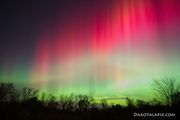
Our Nation is embarking on ambitious plans to modernize an infrastructure that will be based on advanced technological resources vulnerable to space weather. Space weather impacts everyday life, including national security, emergency response, electric power grids, aviation, communications, global positioning system (GPS) applications, and satellite operations -- technology we have come to rely on for our day-to-day activities. These recent advances in our technological infrastructure drive emerging space weather service needs undreamed of just a decade ago.
Extreme space weather storms are rare, but these low frequency events have significant consequences. Recent reports suggest the greatest natural disaster perhaps facing the Nation would be an intense geomagnetic storm. In December 2012, the U.S. National Intelligence Council presented solar geomagnetic storms as an event that could change the future course of human history. Building hazard-resilient communities is a national
priority, but can we ensure the security of our high-tech community during an extreme space weather storm?
Comment: Many live in a fantasy world of refusing to think about anything they consider "negative". But thankfully, there are some interested in survival on this planet who realise the inhabitants on this planet are now vulnerable to harsh new cosmic conditions.
-
A Perfect Storm of Planetary Proportions
The approach of the solar maximum is an urgent reminder that power grids everywhere are more vulnerable than ever to geomagnetic effects
IEEE Spectrum, 24th Jan 2012
 [...] But how does all this space weather cause damage down on the ground? It's a multistep process. First, the intense magnetic field variations in the magnetosphere induce electric fields and currents over large areas of Earth's surface. In turn, this geoelectric field creates what are known as geomagnetically induced currents, or GICs, which flow in any available conductor, including high-voltage transmission lines, oil and gas pipelines, railways, and undersea communications cables. These interconnecting networks essentially act as giant antennas that channel the induced currents from the ground. Hit with a 300-ampere GIC, a high-voltage transformer's paper tape insulation will burn, its copper winding will melt, and the transformer will fail, either right then and there or in the future.
[...] But how does all this space weather cause damage down on the ground? It's a multistep process. First, the intense magnetic field variations in the magnetosphere induce electric fields and currents over large areas of Earth's surface. In turn, this geoelectric field creates what are known as geomagnetically induced currents, or GICs, which flow in any available conductor, including high-voltage transmission lines, oil and gas pipelines, railways, and undersea communications cables. These interconnecting networks essentially act as giant antennas that channel the induced currents from the ground. Hit with a 300-ampere GIC, a high-voltage transformer's paper tape insulation will burn, its copper winding will melt, and the transformer will fail, either right then and there or in the future.
Comment: I think this long article for the world's largest organisation of engineers was missed originally, but it was probably the source for other articles that were picked up, so I have updated the archive. Nothing has changed, the danger to the inhabitants of planet Earth still exists and the sentiment now is not if but when a major conflagration will occur....
NASA Mission to Study What Disrupts Radio Waves
Space Daily, 29th April 2013
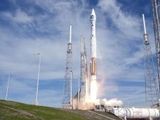
A NASA-funded sounding rocket mission will launch from an atoll in the Pacific in the next few weeks to help scientists better understand and predict the electrical storms in Earth's upper atmosphere These storms can interfere with satellite communication and global positioning signals.
The mission, called EVEX, for the Equatorial Vortex Experiment, will launch two rockets for a twelve-minute journey through the equatorial ionosphere above the South Pacific. The launch window for the mission from the Kwajalein Atoll in the Marshall Islands is from April 27 to May 10, 2013. [...]
This area of the ionosphere is known for calm days and tempestuous nights, times when the ionosphere becomes rippled like a funhouse mirror, disturbing radio signals, and introducing GPS errors of a half mile or more.
The two rockets will measure events in two separate regions of the ionosphere to see how they work together to drive the ionosphere from placid and smooth to violently disturbed. Such information could ultimately lead to the ability to accurately forecast this important aspect of space weather.
Comment: More space weather driven research, see more below.
-
IRIS Solar Satellite Arrives at Vandenberg AFB for Launch
Space Daily, 19th April 2013
Scientists will soon gain a better view into energy and plasma movement near the surface of the sun, thanks to delivery of the Interface Region Imaging Spectrograph (IRIS) spacecraft to Vandenberg Air Force Base, Calif. in preparation for launch.
Part of NASA's Small Explorer (SMEX) Mission, which delivers space exploration missions costing less than $120 million, IRIS was designed and built at Lockheed Martin's Space Systems Company Advanced Technology Center (ATC) in Palo Alto, Calif. The program was developed with support from Lockheed Martin's Civil Space line of business as well as partners Smithsonian Astrophysical Observatory, Montana State University, Stanford University and the University of Oslo. The launch of IRIS will not take place before May 28. [...]
NASA's Ames Research Center, Moffett Field, Calif., is responsible for mission operations and the ground data system. The Norwegian Space Centre will capture the IRIS data with their antennas in Svalbard, inside the Arctic Circle in northern Norway. The science data will be managed by the Joint Science Operations Center of the Solar Dynamics Observatory, run by Stanford and Lockheed Martin. NASA's Goddard Space Flight Center in Greenbelt, Md., oversees the SMEX project.
The goal of the IRIS program is to better understand how energy and plasma move from a lower layer of the sun's surface called the photosphere, through the chromosphere layer and to the outer corona layer.
Standing Watch against Space Weather
White House, 26th April 2013

Just as there is weather on Earth, there is weather in space. And though we cannot directly see or feel it when we step outside, it has the potential impact our daily lives.
"Space weather" originates on the Sun, can release the energy-equivalent of 100 hurricanes in just minutes, and can produce wind gusts that exceed one million mph. Every 11 years, the Sun undergoes a period of heightened activity called the "solar maximum"–a period that is occurring right now–that can bring especially powerful solar eruptions and hurl energetic particles into space, sometimes toward the Earth. Though the likelihood that these solar storms will thrust particles in our planet's general direction is very low–when they do, they can damage satellites, harm astronauts in space, make GPS information erratic or undependable, and in some cases even cause electricity blackouts on the Earth.
Comment: Even The White House are paying attention...

Former CIA Director: The Grid Is Vulnerable To AttackForbes News, 26th April 2013

The electric power grid in the United States is vulnerable to attacks that have already begun, former CIA Director R. James Woolsey said in Chicago Thursday night, and America needs distributed generation as backup–primarily in the form of natural-gas cogeneration and solar power.
On another energy-security front, Woolsey called on automakers to produce fuel-flex cars and for gas stations to offer motorists the choice of gasoline or methanol–a liquid fuel made from natural gas–to free American transportation from dependence on OPEC. [...]
The grid is under attack already, according to Woolsey, and regularly fending off hacking attempts. To illustrate the possible consequences of a successful attack, Woolsey plugged the NBC series "Revolution," which explores "what happened to America when the power went out."
"We have 18 critical infrastructures in the United States: water, food, electricity and so forth. All 17 of the others depend on electricity," Woolsey said. "Everything depends on the electric grid."
Comment: The penny is well and truly dropping concerning a solar megablast. I don't believe the excuse of a man-made EMP strike is the real problem. Are controllers now starting to panic that they have created a nightmare scenario? The issue is centralised power distribution, see archives for lots of previous articles, reports and comments.
UC Berkeley selected to build NASA's next space weather satellite
UC Berkeley News, 16th April 2013

Image: This picture of Earth and the ionosphere, taken with a handheld camera by an astronaut on the International Space Station, shows a bright red wall of plasma near the equator. The ICON satellite will image this glowing plasma in order to connect Earth storms to ionospheric storms and better predict space weather. Though the glowing plasma looks like the aurora, it's much higher in altitude.
BERKELEY –NASA has awarded the University of California, Berkeley, up to $200 million to build a satellite to determine how Earth's weather affects weather at the edge of space, in hopes of improving forecasts of extreme "space weather" that can disrupt global positioning satellites (GPS) and radio communications.
The satellite mission, called the Ionospheric Connection Explorer (ICON), will be designed, built and operated by scientists at UC Berkeley's Space Sciences Laboratory. Scheduled for launch in 2017, ICON will orbit 550 kilometers (345 miles) above Earth in the ionosphere: the edge of space where the sun ionizes the air to create constantly shifting streams and sheets of charged particles. These charged particles can interfere with GPS signals and radio signals that travel through and bounce off the ionosphere.
ICON will collect data needed to establish the connection between storms that occur near Earth's surface and space-weather storms, allowing scientists to better predict space weather. These results could help airliners, for example, which today cannot rely solely on GPS satellites to fly and land because signals from these satellites can be distorted by charged-particle storms in the ionosphere.
"Ten years ago, we had no idea that the ionosphere was affected and structured by storms in the lower atmosphere," said the project's principal investigator, Thomas Immel, a senior fellow at the Space Sciences Laboratory. "We proposed ICON in response to this new realization."
Comment: Another big NASA grant for space weather research. OK, I was more intrigued with the image of fiery plasma (aetheric FIRE) above the equator.... but this is still quite an interesting press release...
NASA grants UCF $55 million for space-weather researchCentral Florida Future News, 14th April 2013
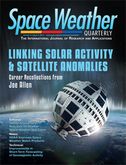
UCF received its largest-ever research grant Friday to study the influence of space weather on Earth's upper atmosphere.
The $55 million NASA grant will allow UCF to take a lead role in the development of a microwave-sized instrument called GOLD, or the Global-scale Observations of the Limb and Disk, according to a UCF Today press release.
The instrument is scheduled to be launched on a satellite that will orbit 22,300 miles above Earth. The mission's launch site has yet to be announced, but the expected launch date will be sometime in 2017.
GOLD's purpose will be to capture images of the boundary between Earth and space, which could lead to a better understanding of solar storms. This is significant because these storms interfere with television programming, GPS signals and cellphone reception, according to UCF Today.
Comment: Another big grant for Space Weather research. See also,
Project Analyzing Impact Of Space Weather On Satellites Gets NASA Grants.
CU-Boulder to receive $36 million from NASA for space weather mission
University of Colorado Boulder, 12th April 2013
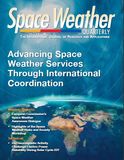
The University of Colorado Boulder will receive roughly $36 million from NASA to build and operate a space instrument for a mission led by the University of Central Florida that will study Earth's upper atmosphere to learn more about the disruptive effects of space weather.
The mission, known as the Global-scale Observations of the Limb and Disk, or GOLD, involves imaging Earth's upper atmosphere from a geostationary orbit some 22,000 miles above the planet. The mission is expected to have a direct impact on the understanding of space weather like geomagnetic storms that alter the temperature and composition of Earth's atmosphere, which can disrupt communication and navigation satellites, affecting everything from automobile GPS and cell phone coverage to television programming.
Comment: Our world has changed and the serious consequences of space weather is the proof.
Thunderstorms contain 'dark lightning,' invisible pulses of powerful radiation
Washington Post, 8th April 2013

A lightning bolt is one of nature's most over-the-top phenomena, rarely failing to elicit at least a ping of awe no matter how many times a person has witnessed one. With his iconic kite-and-key experiments in the mid-18th century, Benjamin Franklin showed that lightning is an electrical phenomenon, and since then the general view has been that lightning bolts are big honking sparks no different in kind from the little ones generated by walking in socks across a carpeted room.
But scientists recently discovered something mind-bending about lightning: Sometimes its flashes are invisible, just sudden pulses of unexpectedly powerful radiation. It's what Joseph Dwyer, a lightning researcher at the Florida Institute of Technology, has termed dark lightning. [...]
The radiation in these invisible blasts can carry a million times as much energy as the radiation in visible lightning, but that energy dissipates quickly in all directions rather than remaining in a stiletto-like lightning bolt. [...]
How is it that some storms produce these unusually strong rays? Dwyer speculates that super-fast electrons – perhaps revved up after being struck by cosmic rays that hit Earth's atmosphere from deep space – may be the key. The theory is that these energetic electrons collide with atoms inside thunderclouds to create X-rays and gamma rays. These collisions lead to chain reactions that could be the mysterious basis for dark lightning.
Comment: Researchers are now explaining just how serious the impact of big blasts of energy from space are... So, we are left wondering if this is the same as the mysterious "killer electrons" that scientists have informed us about (see below). At the moment, I am even wondering if there is a link with the microwave LASER/MASER energy that is making the perfectly round deep sinkholes.... What about TGFs? See archives for background info. So what happens if a human got hit with one of these dark bolts of lightning besides a big dose of radiation? Update: I have checked the archives and it seems this news is just the latest offering concerning TGFs that I first picked up as a major sign that atmospheric conditions were becoming electrically intense.
-
High-speed beams of charged particles accelerate towards Earth
ESA News, 6 December 2007 Flashback!
"ESA's Cluster constellation has found that multiple, high-speed beams of electrically charged particles, or ions, are formed on the night-side of near-Earth space and get accelerated towards Earth. These observations are key to understanding how solar material manages to reach the Earth's night-side, to forecast the behaviour of the magnetic environment around our planet, and in turn, to better protect ground and space-based technologies.
Different theories were proposed in the 80's and 90's to explain the presence of these ion beams."
-
Shocking recipe for making killer electrons
European Space Agency News, 11th March 2010 Flashback!
"Killer electrons are highly energetic particles trapped in Earth's outer radiation belt, which extends from 12 000 km to 64 000 km above the planet's surface. During solar storms their number grows at least ten times and they can be dislodged, posing a threat to satellites. As the name suggests, killer electrons are energetic enough to penetrate satellite shielding and cause microscopic lightning strikes. If these electrical discharges take place in vital components, the satellite can be damaged or even rendered inoperable. [...]
Thanks to this analysis of Cluster data, if the killer electrons happen to be ejected towards Earth, we now know that they can strike the atmosphere within just 15 minutes."
-
Science highlight - Rise of the Killer Electrons
ESA News, 16th July 2010 Flashback!
"Two belts of trapped high-energy particles, held in place by Earth's magnetic field, surround Earth: the Van Allen radiation belts. Killer electrons in the outermost belt move close to the speed of light and carry a lot of energy. These can penetrate satellite shielding and cause microscopic lightning strikes that damage and sometimes destroy vital components.
[...]
Intense solar activity can disrupt the Van Allen belts, and Cluster made another vital discovery when it was on hand to observe directly the effects of a particularly strong solar shock wave hitting the magnetosphere in 2004.
It saw the creation of killer electrons through what turns out to be a two-step process. The electrons are initially accelerated by the shock wave compressing Earth's magnetic field. Then Earth's magnetic lines wobble, creating something like a very large-scale, low frequency laser, which accelerates the electrons even more, up to 'killer' energies.
And Cluster showed that this transition, from normal to killer intensities, can happen in just 15 minutes."
-
Lancaster involved in £400,000 project to understand "killer electrons"
Lancaster University News, January 2011 Flashback!
"Scientists aim to find out more about so-called "killer electrons" in the Van Allen radiation belt around Earth, which can damage orbiting satellites and spacecraft.
The Van Allen radiation belt periodically discharges energetic particles such as electrons and ions into the high atmosphere above Earth, especially at the polar regions. This can change the chemistry of the atmosphere, with possible implications for climate change. "
The talk of Killer electrons causing climate change is news to me...
Flights to get bumpier as turbulence to double
Flying is to become a far less comfortable experience according to a study of how levels of turbulence are set to change over the next 40 years.
The Telegraph, 8th April 2013

Trans Atlantic flights will encounter up to twice as much turbulence while enroute, the research has shown.
Using atmospheric computer models, the scientists behind the work were able to simulate how changes in the climate will impact on the invisible patches of mixing air that cause turbulence.
Dr Paul Williams, a Royal Society research fellow at the University of Reading, said the results suggest air passengers will have less comfortable journeys in the future.
It could also have far more serious implications than a few more spilt drinks and more time staring at the illuminated seat belt sign. [...]
Dr Williams said:
"Thirty thousand feet above our heads, the jet stream is being accelerated, which is having a destabilising effect that is making air turbulence more likely to form.
"There are 600 transatlantic crossings every day, so a lot of fights will be affected by this."
Comment: This is the reality of worsening space weather. There are already quite a few articles and comments that relate to the jet stream and turbulence in the archives, see Best of the Blog
Space Weather & Electromagnetic Chaos.
Space weather: how it affects Earth
IOL News, 6th April 2013

Paris - Space weather is caused mainly by storms and eruptions in our volatile Sun sending potentially dangerous radiation towards Earth.
It also causes the spectacular "aurora" light displays that have awed so many in the polar regions - a beautiful show of radiation hitting Earth's magnetic field.
The Sun randomly and suddenly ejects bursts of its component plasma or magnetic matter in events called coronal mass ejections (CMEs), and is subject to equally arbitrary bursts of radiation called solar flares.
External electric flux influences Earth's climate
thunderbolts.info, 8th April 2013

According to a recent
press release, ten years of data analysis has revealed that cloud height changes over time in response to an electric field generated by "global thunderstorms". Although Earth's electric field is brought into the discussion, and the electric charge on small water droplets is mentioned, researchers admit to mysterious forces at play.
It was in September of 2006 that a major premise of Electric Universe theory was confirmed:
Earth weather is electrically connected to the ionosphere. Since electricity always flows in a circuit, if the ionosphere connects to Earth's magnetosphere then it connects to the circuits of the Solar System, as well.
Comment: We are reminded here that atmospheric scientists have already admitted that Earth weather is electrically connected to the ionosphere. Since the ionosphere connects to Earth's magnetosphere, Earth weather is influenced by being part of a large electrical circuit in the Solar System. So, it is not really correct to think of weather on Earth being just being a global phenomenon anymore when we know huge flows of electrical charge are coming in from space.
NASA Sounding Rocket Observes the Seeds of Noctilucent Clouds
Space Daily News, 5th April 2013
 A constant stream of space debris flows toward Earth from the rest of the solar system.
A constant stream of space debris flows toward Earth from the rest of the solar system. Large meteors can sometimes survive the intense friction and heat upon entering Earth's atmosphere, but by and large the meteors evaporate and reform into tiny particles that are left to whiz through the atmosphere. Such particles are so light and so ubiquitous that scientists refer to them as smoke. [...]
"The models that tiny meteorite dust lies at the heart of ice crystals in noctilucent clouds are likely right, because there are some 20,000 dust particles per cubic centimeter up there." [...]
In other ways, however, the observations didn't match the requirements for the existing model. Each particle was smaller than scientific theories say is needed to form ice crystals. CHAMPS found the particles ranged from 0.4 to 1.2 nanometers in radius. Particles of this size are not believed to have enough surface area for ice crystals to form around them, and so current models require particles with at least a 1.5 nanometer radius.
But CHAMPS data also showed that these particles were charged, which can increase the probability that ice will grow on them. The data also showed different amounts of charged particles at different heights and at different times during the day and night. This too must be incorporated into new models of noctilucent cloud formation.
Comment: It is interesting to know that ultraviolet light from the sun alters the electrical charge on the meteor dust/smoke, but this is more confirmation that noctilucent clouds are electrically charged and glowing in the sky. The article fails to explain why these clouds are now being seen over Europe in recent years. Presumably, it is the same reason as why intense geomagnetic storms are pushed south towards the equator and whatever provides the opposing force, has somehow got weaker.
Europe launches warning centre for extreme solar weather events
Air Traffic Management, 4th April 2013

Europe has launched a Space Weather Coordination Centre, the first such centre to be opened under the European Space Agency's (ESA) Space Situational Awareness programme.
Read More On The Solar Weather Threat
The new SSCC centre will serve as the central access point to a portfolio of European space weather expertise. Located at the 'Space Pole' in Brussels, the SSCC includes the first European space weather helpdesk and, through this, rapid access to expert support on solar weather, ionospheric weather, the geomagnetic environment and the orbital radiation environment.
Comment: The inauguration of Europe's first Space Weather Coordination Centre has been given a fair amount of fanfare... When I wrote and published my book in September 2006, I was basing my assessment on scientific articles and various scientific reports and military reports easily available on the internet and therefore in the public domain, for me it was impossible to miss the implications... I made my call about space weather and energy driven evolutionary change and got it right.... Space Weather means the ability of humans to exist on this planet has changed but few outside the scientific community have given this much thought. Major country-wide blackouts, the risk of long term damage to our technological infrastructure, electronics and computer systems becoming unreliable at times, are to be expected but they are not the only major issues. So, whilst world controllers continue to try and mitigate the situation and create their disaster-recovery plans, the real story is only just emerging. It is now becoming very apparent to many more people that the knowledge of astronomical cycles affecting life on this planet was known in ancient times by high civilisations on this planet that perished due to cataclysm. Survivors decided that preserving the knowledge of what happened was vital and religious texts have been a major repository of ancient knowledge. As astronomers fret over massive comets that could cause havoc in our solar system, it seems that we still await some further major cosmic events and the inevitable evolutionary change.
What is space weather?
Raw Story, 3rd April 2013
Faint 'Red Arcs' Spotted Over Europe
Live Science, 2nd April 2013
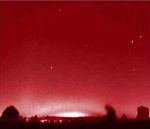
Glowing red arcs invisible to the naked eye have now been detected high above most of Europe using advanced cameras pointed at the sky.
When streams of high-energy, charged particles come rushing from the sun to batter Earth, they cause what are called geomagnetic storms. These events are disruptions in the magnetosphere, the part of Earth's atmosphere dominated by the planet's magnetic field. The most dramatic effects of these storms are giant, bright auroras in Earth's polar regions, but the tempests result in other striking consequences as well, such as faintly glowing red arcs high up in the ionosphere. This is the electrically charged part of Earth's atmosphere, stretching from about 50 to 370 miles (85 to 600 kilometers) above the Earth. [...]
(Red arcs happen when oxygen atoms in the ionosphere emit light, after being excited by electrons heated at greater heights in Earth's magnetosphere.)
Comment: These red arcs were once rare, so this appearance over most of Europe suggests the impact of space weather is getting stronger and related to our weakening magnetosphere and cosmic shielding. In the paper
Aurora of October 22/23, 1958, at Rapid City, South Dakota by F. E. Roach* and E. Marovich*, it states: "Stormer [11] records only two such arcs over southern Norway between 1911 and 1940. In a historical review, he lists nine between 1826 and. 1872 and concludes "that red arcs very rarely occur, and only during years of great solar activity." Thus, it seems that recent mediocre solar activity is now generating far greater affects.
U of S physicist tracks disruptive 'space weather'
The Star Phoenix, 1st April 2013

[...]
According to McWilliams, some world governments have already started to include space weather in their disaster planning alongside things such as global pandemics and volcanic eruptions. The ability to predict how certain solar events would affect Earth's atmosphere could be very useful in such preparations.
Scientists are still quite a long way from such predictions, however.
"We're still trying to understand the system as a whole," McWilliams said. "We're trying to almost make something like a weather prediction. Something happens on the sun, it comes out into space, it interacts with the Earth and ultimately something happens with the Earth's atmosphere. This is a huge chain of events happening one after another."
The variety of scale at play in such studies is a big part of the challenge.
Comment: The arrival of a new stormy cosmic enivironment and Space Weather provides some real cosmic reality for the inhabitants of this planet but few even know it or the seriousness of the potential consequences...
Protecting the Power Grid From Solar Storms
New spacecraft will aid forecasts of space weather
Spectrum News, 28th March/APRIL 2013

It can happen: Every so often the sun emits an explosive burst of charged particles that makes its way to Earth and, under just the right conditions, wreaks havoc on power grids. A powerful geomagnetic storm in March 1989 blacked out the entire province of Quebec, leaving millions of customers in the dark and damaging transformers as far south as New Jersey. Lately the question being debated in space weather circles is: Are we prepared for a repeat, or a storm 10 times worse–like the 1859 solar superstorm? ?
Thanks to two new satellites, we might be better prepared than ever. The Deep Space Climate Observatory [pdf], which will measure the solar wind at the Sun-Earth L1 Lagrange point, some 1.5 million kilometers from Earth, is set for launch next year. L1 is a gravitational sweet spot ideal for observing the sun because it's never shadowed by the moon or Earth. Also slated for 2014 is an experimental solar-sail mission dubbed Sunjammer, which will fly? more than a million kilometers closer to the sun than L1 and could become the basis for a space-weather early-warning system.?
Comment: Basically, this is an article meant for engineers who can handle some technicalities. There are two new space weather initiatives to help scientists make accurate space weather predictions or at least react quickly to help safeguard satellites and ultimately any geomagnetic storms that can disable national power grids. First, NASA have found an abandonned satellite, refurbished it and are now planning to launch it because space scientists are desperate for more data to help them predict space weather and as the military have a vested interest, they are willing to pay for this new operation. Second, there is a new solar sail to help deal with the lethal whirlwind of junk in space see also,
NASA set to launch Sunjammer, the largest solar sail in histor.
Space Weather Swings Between Extreme Effects
Wired News, 28th March 2013

Roughly every 11 years, headlines announce the peak of a natural variation known as the solar cycle, pointing to a proliferation of sunspots, potentially dangerous solar flares and beautiful aurora.
This period of increased activity is known as solar maximum, the latest of which is predicted to arrive in August. But scientists who study the sun say that we should be paying just as much attention to the sun's calmer periods.
"Space weather doesn't go away during solar minimum, it just changes form and approaches a different extreme," said astrophysicist Madhulika Guhathakurta, who lead's NASA's "Living With a Star" project and co-authored an opinion piece on this topic that appeared in Space Weather March 19.
The solar cycle, say scientists like Guhthakurta, is an oscillation between two extreme states, each with their own distinct conditions and hazards, rather than a simple change between periods of high and low activity.
Comment: Due to Earth's declining cosmic shield, we are being constantly impacted by space weather. It's not just satellites in near-earth orbit, all lifeforms on this planet are being affected one way or the other as we experience a cosmic flood of energy which will lead to evolutionary change. This is not my opinion, evolutionary biologists tell us that the trigger for rapid evolutionary change is "disturbed" environments, see archives for more background information.
Space weather research to look at energy distribution
Phys.Org News, 11th March 2013

A University of Texas at Arlington physicist has been awarded more than $400,000 in NASA funding to develop a 3D look at how electrodynamic energy from solar winds enters and moves throughout the Earth's upper atmosphere.
Yue Deng, an assistant physics professor, aims to help scientists and engineers protect satellites, power distribution systems and other vital infrastructure from the potentially harmful effects of these inevitable bursts of energy.
Understanding interaction between the Earth's magnetic field, or magnetosphere, and its upper atmosphere – known as the thermosphere/ionosphere – is especially important this year and in 2014, Deng said. That's when the Sun is predicted to reach a time of heightened activity or its "solar max." [...]
Energy entering the thermosphere/ionosphere after a solar storm can wreak havoc on scientists' ability to track the satellites that orbit the Earth in that region, anywhere from about 100 to 500 kilometers above the ground.
Energy bursts from solar flares, coronal mass ejections and similar phenomenon can also disrupt energy distribution systems on Earth, communication technology and affect airline activity.
New satellite to warn of severe weather by watching lightning
NOAA and NASA's next generation weather satellite may provide earlier warnings
WUWT, 1st March 2013

A new satellite that will detect the lightning inside storm clouds may lead to valuable improvements in tornado detection. The GOES-R satellite is currently being built with new technology that may help provide earlier warnings for severe weather. The national average is a 14-minute lead time to warn residents of a tornado, but NASA and NOAA scientists are looking to improve severe weather detection to save lives and property. They are developing the Geostationary Operational Environmental Satellite-R Series, or GOES-R, to observe thunderstorm development with much greater spatial and temporal detail than ever before. Severe weather knows no specific season and the new technology aboard GOES-R is expected to help provide earlier detection for warnings, whatever the time of year.
[...]
"Based on the GOES-R research, there is a potential for greater accuracy and additional tornado warning lead time," Goodman said. One significant advancement could help detect developing tornadoes at night to provide the public more time to get to safety.
Studies show that a sudden increase in total lightning flash rate is correlated to impending tornadoes and severe storms. The GOES-R Geostationary Lightning Mapper (GLM) will have a new capability to take continuous day and night measurements of the frequent intra-cloud lightning activity that accompanies many severe storms. This will help forecasters identify intensifying storms before they start producing severe weather on the ground, enabling the issuance of more timely and accurate severe weather warnings. [...]
In addition to providing crucial information as part of NOAA's fleet of operational weather satellites,
GOES-R will also monitor space weather, such as solar flares and geomagnetic storms that stem from the sun's activity and can affect spacecraft and human spaceflight.
Comment: I have been pointing out in my writings, NASA have been studying the electric origin origin of our weather for quite some time, so it is interesting that the GOES-R satellite seems to be automating the process of the detection of space weather and weather phenomena at the same time. On a more amateur level, tornado chasers pick up electric signals that tell them a tornado is close by and so do TV sets...
NASA video explains Space Weather
Simplifying a Coronal Mass Ejection through animation
IT World, 26th February 2013
February 26, 2013, 11:11 AM – NASA has posted this all-age-friendly animated video to help explain the concept of "space weather" to people, especially focusing on Coronal Mass Ejections (CME).
The agency explains why CMEs are so important, whether it's to describe why satellites can get damaged or why astronauts doing spacewalks need to get back inside.

UK must prepare for potentially serious solar superstorms
Air Traffic Management News, 7th February 2013

The UK should plan now to mitigate the effects of a rare but potentially serious solar superstorm, according to a report published today by the Royal Academy of Engineering.
It said that although the UK is better prepared than many countries, there are areas where we need to improve our resilience.
The Academy's report, Extreme space weather: impacts on engineered systems and infrastructure, was drawn up with the help of experts from many different disciplines. It is the UK's first in-depth assessment of the potential impacts of solar superstorms.
Explosive eruptions of energy from the Sun that cause minor solar storms on Earth are relatively common events. Superstorms, by contrast, occur very rarely – perhaps once every century or two. Most superstorms miss the Earth, travelling harmlessly into space. Of those that do travel towards the Earth, only half interact with our environment and cause damage. The last true solar superstorm – known as the 'Carrington event' was in 1859.
However, a solar superstorm is inevitable at some point and will degrade the performance of the electricity grid, satellites, GPS systems, aviation and possibly mobile communications. [...]
The Academy's report,
Extreme space weather: impacts on engineered systems and infrastructure, is available at
www.raeng.org.uk/spaceweather.
Comment: The Royal Academy of Engineering Space Weather report is 70 pages and very similar in style to the Lloyds of London Space Weather Report (November 2010), but obviously more technical. There is a fair amount of discussion about how much radiation people are being exposed to on high altitude flights, even during normal non geomagnetic storming days... it reminds me of my movie idea where the rich and famous jetsetters turn into horrible mutants...
-
A solar 'superstorm' is coming and we'll only get 30-minute warning
They cause devastation, occur every 150 years – and the last one was in 1859
The Independent, 6th February 2013
 A solar "superstorm" could knock out Earth's communications satellites, cause dangerous power surges in the national grid and disrupt crucial navigation aids and aircraft avionics, a major report has found.
It is inevitable that an extreme solar storm – caused by the Sun ejecting billions of tonnes of highly-energetic matter travelling at a million miles an hour – will hit the Earth at some time in the near future, but it is impossible to predict more than about 30 minutes before it actually happens, a team of engineers has warned.
A solar "superstorm" could knock out Earth's communications satellites, cause dangerous power surges in the national grid and disrupt crucial navigation aids and aircraft avionics, a major report has found.
It is inevitable that an extreme solar storm – caused by the Sun ejecting billions of tonnes of highly-energetic matter travelling at a million miles an hour – will hit the Earth at some time in the near future, but it is impossible to predict more than about 30 minutes before it actually happens, a team of engineers has warned.
Solar superstorms are estimated to occur once every 100 or 200 years, with the last one hitting the Earth in 1859.
Although none has occurred in the space age, we are far more vulnerable now than a century ago because of the ubiquity of modern electronics, they said.
"The general consensus is that a solar superstorm is inevitable, a matter not of 'if' but 'when?'," says a report into extreme space weather by a group of experts at the Royal Academy of Engineering in London.
Comment: I presume the 30 minutes is after fast radiation has hit the ACE satellite and if the satellite is operational then we may get a warning... Please see the archives (March 2012) for the opinion of scientists at the American Geophysical Union, who realise our early warning system is unreliable and needs to be replaced. Best of the Blog Space Weather News & Reports.
The dangers of solar storms: That which gives power can also take it away
Earth Magazine, February 2013
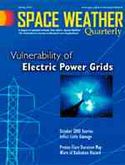
Were a massive solar storm to strike Earth, the impacts could rival or exceed the worst natural disasters humans have ever faced. [...]
Terrorism and natural disasters might be at the forefront of the minds of policymakers and the U.S. population, but a significant threat lurks over our heads: the sun.
A massive solar storm, of the size last seen a century and a half ago, could easily leave hundreds of millions of people in the dark for days, weeks or even months. [...]
"Hurricane Sandy provides a demonstration of what could go wrong," says Kappenman, who worked in the power industry for 20 years, then for Metatech Corporation, a scientific and engineering consulting firm, and is now an independent consultant. After a hurricane, people in affected regions depend on assistance from neighboring, unaffected regions. In the case of a severe geomagnetic storm, there may not be a neighboring unaffected region, Kappenman says.
"We are talking about something that could sweep across the entire continent, not a few counties near landfall," he says. [...]
The chances of another Carrington Event are not high, Andres says. "In any one year, maybe 2 or 3 percent," he says. The impact, however, could be frightening.
It's possible, Andres says, that all of North America could lose the ability to transmit electricity. Or at the very least, it's possible that such a storm would leave "in excess of 100 million people cut off from electrical power for perhaps weeks, months, extending into years," Kappenman says. "We are not prepared for dealing with that, and … we really don't want to find these things out firsthand," he adds. [...]
Finally, at the international level, the vulnerability of infrastructure to space weather is not being ignored either. U.S. President Barack Obama and U.K. Prime Minister David Cameron have cultivated what's being billed as a "space weather partnership" through meetings between the two leaders in May 2011 and March 2012. In June 2012, NOAA and the U.K. Government Office for Science jointly announced an agreement to strengthen collaboration between the two nations' science communities in an effort to further protect their infrastructure against damage from space weather.
Comment: This article provides details of the severity of a major space weather event very simply... I have NEVER seen an article where anyone dared to claim that "...all of North America could lose the ability to transmit electricity"... But this is an official website belonging to the American Geophysical Union....
Britain faces risk of power cuts due to solar storms
Britain could face the risk of power cuts due to solar storms as the Sun enters an 11-year peak in activity, a new report claims.
The Telegraph, 6th February 2013

Lloyds of London warned that bursts of charged particles given off by the Sun could disrupt GPS networks and interfere with rail signals and aeroplane autopilot systems.
Solar storms occur often but are more frequent when the sun is at the most active phase of its cycle, meaning the greatest risk of a major storm is within the coming years.
Tom Bolt, of Lloyd's, said: "Space storms are not science fiction – they can affect everything from hospitals to banking.
"As businesses and societies are more interconnected, space weather damage in one sector could lead to failures in others."
Comment: I have checked, Lloyds of London have not issued a new space weather report. As I have already stated, the sun is still underactive so all the hype is to make sure people are still prepared in the event of a superflare and/or massive coronal mass ejection (CME). Most likely, the real concern is the arrival of a few big comets arriving in 2013 that could generate some serious space weather. This has happened in the past, but the issue now is Earth's magnetosphere (external magnetic shielding) is very weak and the space weather generated could be severe see archives for many previous reports on the impact of space weather.
Penn State Offering Space Weather Course
We are Centralpa.com News, 5th February 2013

STATE COLLEGE, CENTRE COUNTY - Some of the sun's emissions can have a harmful effect on electronics, and more governments are taking note.
"Various groups within the U.N., such as the World Meteorological Organization, International Civil Air Organization, and the Committee on the Peaceful Uses of Outer Space, all global committees, are now all bringing in space weather because of their concerns or impacts on technology," said Bill Murtagh of the Space Weather Prediction Center.
Beginning this term Penn State is offering a class for meteorology and electrical engineering students to learn how emissions can affect the atmosphere and technology.
"We've had courses along these lines for 50 years," said Dr. Tim Kane, an electrical engineering professor at Penn State teaching the new space weather class. "But this space weather class from a meteorology or what I would call an operational or forecasting point of view was a great opportunity."
After Murtagh spoke at Penn State in February 2012, PSU meteorology junior Andrea Karelitz began lobbying for a space weather class.
"Penn State's one of the top meteorology undergraduate programs in the country, and the fact that from the meteorologist's perspective, there wasn't much of a space weather involvement course or anything," said Karelitz, now a senior. "I think it was really necessary for meteorology students at Penn State to have the knowledge of space weather." [...]
Students in the class are learning how a geomagnetic storm would not only affect GPS satellites, but communications and air travel over the North Pole.
"Airlines need to communicate with the ground during space weather storms," said Murtagh. "Sometimes that's impossible so they need to take various actions to ensure safety of passengers and crew."
"Electromagnetics is how we communicate with each other," said electrical engineering senior Michael Ryder. "Essentially when a large space weather event happens, that's exactly what's going to be caused by it, the electromagnetic interference. And that can blow out grids communication-wise." [...]
"Coming out of Penn State with a meteorology degree, you have a great knowledge of the atmosphere, what the dynamics processes that happen in the atmosphere, and as you go in the workforce, you're kind of the scientist at your news station or at your company." said Karelitz.
Comment: I like it... the young students lobbied their University to provide a course and common sense prevailed... Then we have the irony of the class being taught by an electrical engineering professor that is available to meteorology and electrical engineering students. Well this is certainly some good news. Well done!

Extreme Space Weather Triggered Medieval Famines, Say Astrophysicists
Famines plagued Iceland and food prices spiked in medieval England following extreme space weather events, according to a new study of historical data
Technology Review, 31st January 2013

The Earth's local interplanetary environment is a maelstrom of solar winds, giant clouds of hot plasma ejected from the Sun and violent magnetic fields. To a large extent, we are protected from this so-called space weather by our atmosphere and the Earth's magnetic field.
But every once in a while, these interplanetary storms are so ferocious that even our planetary defences fail. In 1989, for example, a powerful geomagnetic storm knocked out the Hydro-Quebec power grid leaving six million people without electricity.
Today, Lev Pustil'nik and Gregory Yom Din at Tel Aviv University in Israel say the effects of space weather could be much more significant than originally thought. These guys make the case that under certain special conditions, space weather can influence terrestrial weather so severely that it can have a dramatic effects on agriculture, causing crop failures, death and starvation.
Comment: We really are seeing scientists facing up to some cosmic reality these days...
TT Exelis awarded satellite technology contract to forecast space weather
Fort Mill Times, 29th January 2013

The Exelis Coherent Beacon System is a space-based sensor system that investigates and forecasts natural disturbances in the Earth's atmosphere. The sensor system transmits multiple signals through the ionosphere (the upper part of the atmosphere) to a ground-based receiver.
"The new sensor system gives our customers advance knowledge about changes in space weather," said ITT Exelis Director of Antenna and Space Programs Mark Fournier. "This system will allow the U.S. military to predict the effects of ionospheric activity on signals from communication and navigation satellites, which are critical to the safety and performance of our warfighters."
Comment: If the military don't find ways to counteract the impact of space weather, all the high tech defense systems will become useless...
-
Secret [UK] Files and a Satellite Plummets
Mysterious Universe, 28th January 2013
Indeed, I was given access to an eight-page document that detailed how the Government, the military and the emergency services would respond if a satellite crashed on Britain. Classified at Restricted level, and later upgraded to a higher level of security, the document, titled Satellite Accidents with Radiation Hazards, was prepared in 1979 by the British Government's Home Office and was circulated to every Chief Officer of Police, every Chief Fire Officer and every County Council in England and Wales. "Similar circulars are being issued by the Scottish Office and the Northern Ireland Office," said the author of the paper.
According to the file, one of the hardest predictions to make was when and where a stricken space vehicle, possibly spiralling wildly out of control and at hundreds, or even thousands, of miles-per-hour would impact. On this issue, the author of the document stated:
"Although it is likely that knowledge of changes in the orbital pattern which might lead to premature return to Earth would be available many hours or even days before re-entry occurred, it would not be such that a reasonably accurate prediction of the final orbit over the Earth could be made until 12 to 24 hours before impact. Even then forecasts of the precise point of re-entry along this track might still be in error by thousands of kilometers. It is possible accurate warning would not be available till a few minutes before impact and it is possible there might be no warning." [...]
Comment: Now that there is so many dead satellites falling and even known falls are being undereported, this is a useful read...

The perfect solar storm? Sun eruptions to peak in 2013
Fox News, 14th January 2013
 Sunny, with a mild chance of catastrophe?
Sunny, with a mild chance of catastrophe?
A massive solar storm, like the one that knocked out radio communications all over the U.S. in 1958, is coming, and this time the devastation could total as much as $2 trillion, experts told FoxNews.com. Call it the perfect solar storm.
Wireless networks that power Blackberrys and iPhones here on earth, as well as GPS satellites that help pilots navigate planes in the skies, could be blacked out. And electric grids that power neighborhoods and whole cities could temporarily go down, said Professor Jose Lopez, a physicist at Seton Hall University.
"The concern of a strong solar flare in the direction of Earth is legit. The possibility that such a Sun burst could hit Earth could cause extensive damage as it would charge-up our electrical equipment and destroy them," Lopez told FoxNews.com. [...]
Already, as of January 2013, the magnetic belts of the Sun have begun to turn very fast, indicating that a new storm is brewing. Data from NASA's THEMIS satellite reveals that a 4,000-mile thick layer of solar particles has accumulated and continues to gather within the outermost part of the magnetosphere, a protective shield created by Earth's magnetic field.
The Earth's magnetosphere is supposed to block these solar particles, but this current build-up is expected to be at least 30-50 percent more powerful than the storms of the 1850s and 1950s, scientists say.
Comment: I think the real panic is Earth's cosmic shield (magnetosphere) is in a bad way and we are given some facts that I have not seen elsewhere. No wonder there is concern.... For those who are skeptical, it is worth going through the
Daily Space Weather News archive and reading my comments over the last few years and viewing the NICT videos that were placed on YouTube... It seems we have got to the stage that if we had either two weeks of 100+ CMEs and say 60 solar flares OR just one big mega blast, then we could be in trouble. This is most likely if the real problem is that NASA expects the sun to be activated by an approaching comet.... Remember, NASA stands for Never A Straight Answer and the truth is not always obvious especially for those unfamiliar with the science.... The reality is that some large comets do cause huge solar blasts... the timing is perfect as we have at least one big comet arriving soon... this possibility has already been aired see more below...
-
Approaching comet may outshine the moon
Reuters News, 14th December 2012
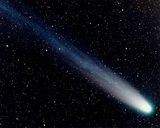 (Reuters) - A comet blazing toward Earth could outshine the full moon when it passes by at the end of next year - if it survives its close encounter with the sun.
The recently discovered object, known as comet ISON, is due to fly within 1.2 million miles (1.9 million km) from the center of the sun on November 28, 2013 said astronomer Donald Yeomans, head of NASA's Near Earth Object Program at the Jet Propulsion Laboratory in Pasadena, Calif.
As the comet approaches, heat from the sun will vaporize ices in its body, creating what could be a spectacular tail that is visible in Earth's night sky without telescopes or even binoculars from about October 2013 through January 2014. [...]
(Reuters) - A comet blazing toward Earth could outshine the full moon when it passes by at the end of next year - if it survives its close encounter with the sun.
The recently discovered object, known as comet ISON, is due to fly within 1.2 million miles (1.9 million km) from the center of the sun on November 28, 2013 said astronomer Donald Yeomans, head of NASA's Near Earth Object Program at the Jet Propulsion Laboratory in Pasadena, Calif.
As the comet approaches, heat from the sun will vaporize ices in its body, creating what could be a spectacular tail that is visible in Earth's night sky without telescopes or even binoculars from about October 2013 through January 2014. [...]
Comet ISON's path is very similar to a comet that passed by Earth in 1680, one which was so bright its tail reportedly could be seen in daylight.
The projected orbit of comet ISON is so similar to the 1680 comet that some scientists are wondering if they are fragments from a common parent body.
"Comet ISON…could be the brightest comet seen in many generations - brighter even than the full moon," wrote British astronomer David Whitehouse in The Independent.
Comment: Since there is a comparison with Comet Hale-Bopp, I think we are being given a subtle warning...
-
2013 set to be Earth's brightest ever for comets
Euro News, 14th January 2013
Star-gazers will be treated to the brightest comet ever seen from Earth this year.
Comet ISON, discovered by astronomers in September 2012, is forecast to appear in the Northern hemisphere sky on November 28 2013. By day it will be visible with the naked eye, while by night it's expected to outshine a full moon. [...]
Although they will miss out on ISON, people in the Southern hemisphere will be able to enjoy Comet Pan-STARRS, which will be visible from January and reach its brightest in March. Pan-STARRS takes its name from the Hawaii-based telescope that discovered it in 2011.
-
Comet ISON, the Sungrazer, Is Coming: Will It Cause a Solar Flare and Electronics Meltdown?
UFO Digest, 4th January 2013
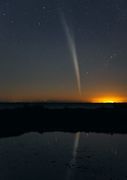 David Eichler, lead author of a forthcoming Astrophysical Journal Letters paper, is theorizing that a sun-grazing comet roughly the size of Hale-Bopp (with a nucleus some 30 kms in diameter), could trigger cosmic ray-generating shockwaves large enough to initiate a complete global electromagnetic meltdown. Eichler is an astrophysicist at Israel's Ben-Gurion University.
David Eichler, lead author of a forthcoming Astrophysical Journal Letters paper, is theorizing that a sun-grazing comet roughly the size of Hale-Bopp (with a nucleus some 30 kms in diameter), could trigger cosmic ray-generating shockwaves large enough to initiate a complete global electromagnetic meltdown. Eichler is an astrophysicist at Israel's Ben-Gurion University.
Eichlet feels that satellites could be put in protection mode but would otherwise be destroyed as Sungrazer ISON passes. Earth's electronics, from micro-circuitry on cell phones to large power stations, could become non-functional.
If such a comet were the size of Hale-Bopp, Eichler says, the resulting solar flare would by far be the largest ever experienced. A comet gets compressed and then explodes in the solar atmosphere which, in turn, creates shockwaves and a gigantic solar flare. There is evidence that a sun-grazing comet may have triggered a large solar flare and cosmic ray-generating shockwaves as recently as 775 A.D., as indicated by tree ring analysis.
ISON is smaller than Hale-Bopp and the 775 A.D. comet, which is our only hope it seems.
If a large comet caused a meltdown, the actual particle acceleration would happen within the sun's magnetic field, explains Eichler, but the comet would initiate the shockwaves. Traveling at a 1000 kms per second, the shockwaves would reach earth in about a day and a half. And the effects would likely be much worse than the 1859 Carrington Event, a solar super-storm that caused havoc on telegraph lines. In that event, the Aurora Borealis was visible as far south as Texas.
Eichler says it is possible that a very large comet could graze the sun once every several thousand years. "If a Hale-Bopp-sized comet grazed the solar corona, which Hale-Bopp did not," said Eichler, "then you'd get a much bigger solar flare than the Carrington Event. Hale-Bopp might become sun-grazing in the distant future."
Comet ISON is indeed a sun-grazer but not as large as Hale-Bopp. Are we safe? [...]
After completing his research, Eichler says he is most surprised by the fact that we're still here to tell the tale. "I didn't realize the solar system was such a dangerous place," said Eichler. "Just the fact that we've gone as long as we have without worse things happening may be why we're here."
Comment: It seems that others have already worked out what the real apprehension is about... Even the BBC are building a new bunker....
-
Sun-Grazing Comets As Triggers For Electromagnetic Armageddon
Forbes, 30th November 2012
-
COMET ISON APPROACHES - It Might Activate The Sun
Spaceweather.com, 13th January 2013
COMET ISON APPROACHES: Later this year, Comet ISON could put on an unforgettable display as it plunges toward the sun for a fiery encounter likely to turn the "dirty snowball" into a naked-eye object in broad daylight. At the moment, however, it doesn't look like much. John Chumack sends this picture, taken Jan. 8th, from his private observatory in Yellow Springs, Ohio:
"Comet ISON (C/2012 S1) is currently in the constellation Gemini, moving between the heads of the twins Castor and Pollux," says Chumack. "It is still pretty faint, near 16th magnitude, but don't be fooled by that. This could become one of the best comets in many years."
Comet ISON is a sungrazer. On Nov. 28, 2013, it will fly through the sun's outer atmosphere only 1.2 million km from the stellar surface below. If the comet survives the encounter, it could emerge glowing as brightly as the Moon, visible near the sun in the blue daylight sky. The comet's dusty tail stretching into the night would create a worldwide sensation.
Comet ISON looks so puny now because it is so far away, currently near the orbit of Jupiter. As it falls toward the sun in the months ahead it will warm up and reveal more about its true character. By the summer of 2013, researchers should know whether optimistic predictions about Comet ISON are justified. Possibilities range from "Comet of the Century" to disintegrated dud. Stay tuned!
Industry should consider consequences of severe space weather event: Aon
Canadian Underwriter, 14th January 2013
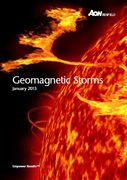 The insurance and reinsurance industries should begin to consider the potential consequences of a severe space weather event, says global reinsurance company Aon Benfield.
The insurance and reinsurance industries should begin to consider the potential consequences of a severe space weather event, says global reinsurance company Aon Benfield.
Solar and geomagnetic activity in particular will peak in the next year, the company says as part of its release of a new report from this month, called
Geomagnetic Storms. [.pdf 2.1 MB]
"Although the probability of an event occurring is low, solar activity roughly follows an 11-year cycle with the peak in solar activity expected to occur in early 2013," the company notes.
Aon calls geomagnetic storms and extreme solar weather a "realistic threat" that can have severe consequences on electrical power distribution (leading to widespread blackouts), telecommunications (including blocking of global communications) and global satellite navigation (which could have consequences for GPS systems, particularly in aviation).
"Insurance and reinsurance industry awareness of geomagnetic storms has grown in recent times, but accurate assessment of risk still remains in its infancy for all but a few niche sectors," Stephen Mildenhall, CEO of Aon Benfield Analytics says.
Comment: It really does look like the penny has finally dropped... There is another report here to add to my large collection of space weather reports obtained over the last 8 years.
India gets its first space weather reading centre in Kolkata
Economic Times, 14th January 2013
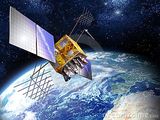
KOLKATA: A centre of excellence specialising in reading space weather conditions to help air traffic on polar routes would come up here by the middle of this year, the first of its kind in the country.
"It will be a centre of excellence in space sciences. The centre's main thrust will be on areas of space weather especially weather in the solar system and gravitational physics," its coordinator, scientist Dibyendu Nandi told PTI here.
Besides air traffic on polar routes, the centre would help in the functioning of GPS networks and mobile satellites placed in space. [...]
"If we have prior information about a storm originating in the solar system or space, or any other changes in space weather, we will inform the civil aviation department about it so that they inform different airlines about the hazards of flying in polar or high altitudes," Nandi said.
"We will also inform the telecommunication department about changes in space weather so that they can safeguard their satellites in space. If you are aware of a storm in space then you can at least take safeguards which will in turn increase the longevity of satellites," he said. [...]
According to Nandi, one of the suspected reasons behind the
Chandrayan Mission falling short of its expected lifespan by one year was technical problems which arose from radiation from storms originating in space.
"It is suspected that very high radiation in space due to changes in space weather damaged Chandrayan and was one of the main reasons behind the mission ending in 2009," he said.
Comment: I would like to see a formal report that reveals that higher than expected levels of radiation caused the Chandrayan Mission to be curtailed. This is interesting because this lunar mission carried various payloads (scientific instrumentation (sensors, detectors, etc.) from other space agencies including NASA, ESA, and the Bulgarian Aerospace Agency, but it seems non of them anticipated the very high levels of radiation in space. Presumably, this really means the plasmasphere of the moon was highly electrified and instruments were zapped... Well, have you looked up at the moon recently? It is exceedingly bright, even NASA is prepared to admit the moon is electric.
Space Weather Quarterly Vol 9 No. 3
American Geophysical Union, 2nd January 2013

Space Weather Quarterly is a free, subscription-based print publication devoted to the impacts of space weather on technical systems, including telecommunications, electric power, radiation effects on space electronics, and satellite navigation. Space Weather Quarterly is a digest published by the American Geophysical Union that supports the journal, Space Weather: The International Journal of Research and Applications, which addresses the applications of space research findings and results to practical problems that face numerous government and industry entities that design and operate technical systems that are known to be influenced and affected by processes in the solar-terrestrial environment. Space Weather also publishes models of various solar system processes, as well as more integrated models, that are addressed to predictions and forecasts of solar and geomagnetic disturbances that impact technical systems
Comment: There are now 9 Space Weather Quarterly publications available free online. I have managed to download some back issues without being a member of the American Geophysical Union and/or subscribing online. This latest 32 page publication was published online on 2nd January 2012 and it's available to download easily here for free at this moment,
Space Weather Quarterly, Volume 9, Issue 3, 2012, .pdf 11.1 MB .
Space Weather: Storm preparations
The Space Review, 7th January 2013

There's good news and bad news on the space weather front. The bad news, for those concerned about the impact severe space weather can have on the Earth, is that the Sun has been active of late, with a series of flares in recent days. These have been too weak to have any significant effect, but serve as a reminder that the Sun is approaching "solar max," the peak of its 11-year activity cycle, with a greater chance of more, and more severe, solar storms in the months to come.
The consequences of solar storms are becoming more significant as society becomes increasingly dependent on technologies, from satellites to the electrical grid, that can be disrupted by a major storm.
The good news, though, is that this upcoming solar max appears to be relatively weak. An updated solar cycle prediction released last week by NASA's Marshall Space Flight Center concludes that solar activity, as measured by sunspots, will peak this fall, but at the lowest level in over a century. While severe solar storms can still take place regardless of the amount of activity, the prediction indicates that the Sun will be less active in this upcoming peak than previous ones. [...]
Despite the concerns about the availability of space weather observations from aging satellites, some think the bigger issue is the lack of planning on how to respond to a space weather event. "We have a reasonable warning capability in space," said Tom Mahony, a senior manager at Ball Aerospace, at a forum about space weather last month held by the Marshall Institute and the TechAmerica Space Enterprise Council.
"What we're missing here is, what's our response protocol? What does our leadership expect us to do?"
Mahony argued for the need for a more consolidated mechanism within the US federal government to manage the various agencies involved in, or who otherwise have a stake, in space weather and the disruptions and damage they can cause.
"No one is engaged in pulling together a national response," he said.
"We have to establish a clearly defined authority to oversee a comprehensive national solution, not just a warning system. We need a commitment to that solution. We need clear and well-defined national response protocols."
Comment: As usual the emphasis on solar max is wrong... The sun can belch out an enormous solar flare and coronal mass ejection at any time during the solar cycle and the seriousness of the impact is worse now. This is due to the poor state of Earth's cosmic magnetic shield (magnetosphere) and the increased permeability or conductivity of space in recent decades which allows more charged sub-atomic particles to 'zap' Earth according to the report titled
Planetophysical State of The Earth and Life. [There are also more recent research papers highlighting the new factor of "Space Climate Change" but discussion of the properties of spacetime is limited as far as I am aware.] I am pleased to discover the DSCOVR satellite being launched in 2014 by NASA, NOAA, and the US Air Force that will be used to monitor solar conditions. The reason there is not much interest at a political level is because world controllers are looking for suitable tools to maintain control over the masses but space weather is a very large monkey wrench where there is a large possibility of no control at all but fewer people in theory should be easier to control....
Giant leap: Kolkata to get its own space centre [INDIA]
Times of India, 7th January 2013

KOLKATA: The city is all set to score another scientific first in the middle of this year.
The central government is funding the Kolkata-based Indian Institute of Science, Education and Research (IISER) for setting up a Centre of Excellence in Space Sciences. IISER received a letter dated December 21, 2012, from the deputy secretary in the HRD ministry saying that it has been selected for the funding.
Speaking to TOI on Sunday, Dibyendu Nandi, who will be the coordinator of the space centre, said it will be first unit of its kind in West Bengal. "The cost of funding is about Rs 4 crore and is spread over a five-year period,'' he said. The centre is expected to become opera-tional in the summer of 2013, he added. [...]
Nandi, who is involved with India's maiden solar mission 'Aditya', said initially the centre will focus on space weather and supporting national astrophysics missions like 'Aditya' – provisionally slated for lift-off in 2016 – and the Laser Inter Ferro Metry Gravitational Observatory network in collaboration with a number of Indian scientific institutions and the US.
Explaining the importance of space weather, Nandi said it impacts our day-to-day lives like the operation of cellphones, GPS networks, electric grids and air traffic on polar routes. "It can also affect satellite operations and astronaut safety. Space weather will play an important role in our forthcoming mission to Mars to be lau-nched in October-November this year,'' he said.
Comment: Another country setting up new space weather tracking facilities.
Space weather
Oxford University Press Blog, 7th January 2013
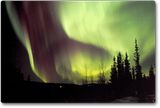
We are all used to blaming things (rightly or wrongly) on the weather, but now it seems that this tendency has been extended to space weather. Space weather, for those who are uncertain, describes the effects that flares and other events on the Sun produce on Earth.
Consult many of the sites on the World Wide Web that are devoted to events on a particular day in history, and you will be told that on 16 August 1989, a geomagnetic storm caused the Toronto Stock Exchange to crash. The trouble is that this is an urban myth. The Toronto Stock Exchange did crash that day, but because of hardware and software failures, not because of a geomagnetic storm.
Comment: The Oxford University's Storm Dunlop (what a name for meteorologist...) is a Fellow of both the Royal Astronomical Society and the Royal Meteorological Society, so we have someone with some pedigree providing a basic tutorial on space weather.
Study Will Explore How Solar Storms Affect Earth's Atmosphere
UMass Lowell, 4th January 2013

We all rely on local weather forecasts to plan our travels and outdoor activities, or even to decide whether to water the lawn.
But researchers like Prof. Paul Song in the Department of Physics & Applied Physics are also interested in "space weather," the constantly changing environmental conditions in interplanetary space, especially between the sun's atmosphere and earth's outer atmosphere. While meteorologists deal with clouds, air pressure, wind, precipitation and the jet stream, space-weather scientists concentrate on changes in the ambient plasma (ionized gas), solar wind, magnetic fields, radiation and other matter in space.
"Predicting space weather is the next frontier in weather forecasting," says Song, who directs UMass Lowell's Center for Atmospheric Research (CAR).
Comment: More news of space weather research but we are told clearly that space weather is affecting Earth's atmosphere and weather... I believe there is enough information in the public domain to justify the belief that space weather is the true reason for the panic amongst scientists about extreme weather...
Press releases from NASA and the European Space Agency amongst other scientific bodies and groups in recent years informs us clearly that Earth is rapidly losing its cosmic defenses. The scientific research carried out already, especially by NASA, informs us that there is a distribution of electric currents linking the magnetosphere with the ionosphere. The Honorary Chairman of the World Forum International Congress "GEOCATACLYSM-2011" states in his paper the following:
"An important role in climate change is attributed to global changes in the parameters of the geomagnetic field and magnetosphere; this refers in particular to the more than 500% increase in the North Magnetic Pole's drift rate and reduction of the geomagnetic field intensity. Today, the impact of magnetospheric processes on Earth's climate is considered a proven scientific fact."
PROCEEDINGS: Natural Cataclysms and Global Problems of the Modern Civilization, WORLD FORUM – INTERNATIONAL CONGRESS September 19-21, 2011 – Istanbul, Turkey
Source: (43.7 MB .pdf) Link.
A few Russian scientists took it upon themselves to warn the world many years ago.
The Russian report titled,
Planetophysical State of The Earth and Life (1997, 1998 in English) report also discusses climate change and simply states:
The temperature regime of any given phase of climatic reorganization is characterized by contrasts, and instabilities. The widely quoted, and believed, "Greenhouse Effect" scenario for total climatic changes is by far the weakest explanation, or link, in accounting for this reorganization.
There were reports of a global temperature maximum in 1994, and the almost uninterrupted existence of an "El-Nino" like hydrological effect. Satellite air surface layer temperature tracking [49,50] allowed the detection of a 0.22 degrees C global temperature variation (within a typical specific time period of about 30 days) that correlated with recorded middle frequency magnetic oscillations. The Earth's temperature regime is becoming more, and more, dependent on external influences. [...]
There is a growing probability that we are moving into a rapid temperature instability period similar to the one that took place 10,000 years ago. This not so ancient major instability was revealed by the analysis of ice drilling core samples in Greenland [51]. [...]
Such high-speed transformations of the global climatic mechanism parameters, and its effects on Earth's physical and biospheric qualities has not yet been rigorously studied by the reigning scientific community. But, researchers are now insisting more, and more, that the Earth's temperature increases are dependent upon, and directly linked to, space-terrestrial interactions [52,53]; be it Earth-Sun, Earth-Solar System, and/or Earth-Interstellar.
Source: Planetophysical State of The Earth and Life, By DR. ALEXEY N. DMITRIEV, Published in Russian, IICA Transactions, Volume 4, 1997, 1998 in English.
Sun storm threat to GPS: Space agency plans global network to study effects of 'solar max' on satellite communications
Daily Mail, 14th December 2012
The Sun reaches the most active period of its 11-year cycle in summer 2013 Increases in the number of sunspots will cause changes in the ionosphere that could interfere with radio transmissions from space
GPS relies on transmissions timed to the split-second, and there are fears the interference could case serious problems with navigation.
Comment: The Daily Mail version has a few more pictures....
Global network to track Sun's effect on Earth
European Space Agency, 12th December 2012

Next year the Sun enters the most active phase of its 11-year cycle. ESA is establishing a worldwide chain of monitoring stations to give a ringside seat to see how this solar activity affects our upper atmosphere, and assess the consequences for satellite navigation and communications.
ESA's Monitor project will track changes to Earth's 'ionosphere', a shell of plasma towards the top of the atmosphere.
Its sensor station network is being set up in advance of the next solar maximum, predicted for mid-2013.
"The current Monitor network is still being developed but has already been detecting mild ionospheric storms," said Roberto Prieto-Cerdeira, heading the project.
Monitor stations work by measuring variations in GPS signals with greater accuracy than existing systems.
"We are placing sensor stations around the globe, but the vicinity of the equator is a particular focus of interest," added Roberto. "It exhibits much more dynamic behaviour than the mid-latitudes.
"So we have established stations at Cape Verde off West Africa and Malindi, Kenya, on the other side of the continent.
Comment: There are reports of these plasma bubbles (like soap bubbles) appearing in the skies and the phenomenon is quite spectacular, see archives...
Sun storm threat to GPS: Space agency plans global network to study effects of 'solar max' on satellite communications
Daily Mail, 14th December 2012
The Sun reaches the most active period of its 11-year cycle in summer 2013
Increases in the number of sunspots will cause changes in the ionosphere that could interfere with radio transmissions from space
GPS relies on transmissions timed to the split-second, and there are fears the interference could case serious problems with navigation.
Comment: The Daily Mail version has a few more pictures....
Forecasting solar activity and the weather in space
Phys.Org News, 30th November 2012

The ability to forecast periods of intense solar activity may be improved after scientists compared cycles of solar magnetic activity (over the past 10,000 years as reconstructed from ice cores) with the action of the planets. The Sun determines the course of the planets, but it has been discovered that the planets may also exert an influence on the Sun. Their configurations appear to be responsible for long-term cycles of increased solar activity.
This discovery is deemed important as our society becomes more dependent on technologies such as satellite communications and navigation systems - as well as power grids - which can be disabled by major solar eruptions. Scientists at Eawag and the ETH Zurich, in collaboration with colleagues from Australia and Spain, are continuing to study the configuration of the planets.
In their study, appearing in Astronomy & Astrophysics, the lead authors Professor José Abreu and Dr Jürg Beer from Eawag Aquatic Research demonstrate why they find the idea of planetary influence so convincing. Tracing the 5 most prominent periodicities of solar activity back over the last 10,000 years, they observed that the peaks and troughs reappear with precisely the same periodicity even after being reduced or vanishing altogether for some time. Dr Beer concludes, '
Everything points to an external 'clock', and that can really only be the planets.' [...]
Their study also looked into the effect of superflares - huge eruptions of solar plasma, hurling billions of tonnes of gas into the atmosphere and causing magnetic storms in space and on Earth.
Satellites, aircraft avionics, power grids, radio signals and many other systems could be disrupted or destroyed by an event of this kind. But whether an improved understanding of solar magnetic activity will help to predict the frequency and intensity of such eruptions remains an open question. Dr Beer admits: 'Storm warnings are still a long way off. But the recent research takes us one step closer towards being able to give a better explanation of the longer-term space climate.'
Comment: This research was first cited in the popular blogosphere three weeks ago (see archives), but I have been reminded since that some geoscientists see the planets as dispersing charge from the galactic centre. Here is an interesting excerpt from the International Congress GEOCATACLYSM 2011 report:
Rising earthquakes: precursor of volcanic winters/ice age that we may AVERT - Other necessary preparations
Several studies since the '70ies show a correlation between weak solar cycles and raised magma and volcanic activity. Present data show not only a weak solar cycle and a rise in earthquakes - volcanic eruptions – cloudiness - storms, but that most probably next decades will be worse. (The proposed explanation is that planet positions disperse electricity from the galactic centre to the planets from its course to the sun, so Earth's magma is charged and is rising its disturbance). Volcanic winters occuring during solar minima, is a FREQUENT but not discussed enough phenomenon.
PROCEEDINGS: Natural Cataclysms and Global Problems of the Modern Civilization, WORLD FORUM – INTERNATIONAL CONGRESS September 19-21, 2011 – Istanbul, Turkey
Source: (43.7 MB .pdf) Link.
The planets are also dispersing charge entering our galaxy and solar system from deep space...
Panel Urges More Funding, Coordination For Space Weather
Aviation Week, 29th November 2012

Space weather – the high-energy interactions of the Sun with Earth and its surroundings – is a growing economic factor as more of the economy goes wireless, but U.S. government efforts to forecast it are hampered by a shortage of funding.
House Science Committee witnesses from the National Oceanic and Atmospheric Administration (NOAA), which is responsible for operational space-weather forecasting, and NASA, which funds the space science that feeds the NOAA space-weather models, agreed Nov. 28 with the thrust of the latest National Research Council (NRC) decadal survey on space weather, which was released in August.
At the top of the priority list, which was based on a survey of researchers in solar and space physics, was a call to complete the current program of spacecraft designed to expand knowledge of how the Sun's violent nature affects the space around it. Collectively the 18 solar-observation spacecraft NASA is flying, and the network of ground facilities run by the National Science Foundation (NSF), comprise a virtual "Heliophysics Systems Observatory" that collects information on the solar flares and coronal mass ejections that can damage satellites in space and power grids on the ground, as well as how the solar wind spreads through the Solar System and interacts with Earth's magnetic field.
Comment: I suppose the problem is the wrong priorities, with the vast expenditure on trying to convince people that CO2 and global warming was the explanation for the inevitable spaceweather related planetary challenges that we are experiencing on this planet.
US Power Grid Vulnerable to Just About Everything
Testosterone Pit, 28th November 2012

As Washington hunts ill-defined al-Qaeda groups in the Middle East and Africa, and concerns itself with Iran's eventual nuclear potential, it has a much more pressing problem at home: Its energy grid is vulnerable to anyone with basic weapons and know-how.
Forget about cyber warfare and highly organized terrorist attacks, a lack of basic physical security on the US power grid means that anyone with a gun–like disgruntled Michigan Militia types, for instance--could do serious damage.
For the past two months, the US Federal Energy Regulatory Commission (FERC) has been tasked with creating a security strategy for the electric grid and hydrocarbon facilities through its newly created Office of Energy Infrastructure Security. So far, it's not good news. [...]
One key problem is theoretically a simple one to resolve: a lack of spare parts. According to the National Academy of Sciences, the grid is particularly vulnerable because it is spread out across hundreds of miles with key equipment not sufficiently guarded or antiquated and unable to prevent outages from cascading.
We are talking about some 170,000 miles of voltage transmission line miles fed by 2,100 high-voltage transformers delivering power to 125 million households.
"We could easily be without power across a multistate region for many weeks or months, because we don't have many spare transformers," according to the Academy.
High-voltage transformers are vulnerable both from within and from outside the substations in which they are housed. Complicating matters, these transformers are huge and difficult to remove. They are also difficult to replace, as they are custom built primarily outside the US. So what is the solution? Perhaps, says the Academy, to design smaller portable transformers that could be used temporarily in an emergency situation.
Comment: From the comments, "Another day, another apocalypse...." I think that will catch on...
Another WUWT.TV video, Mike Smith, severe weather expert
WUWT, 29th November 2012
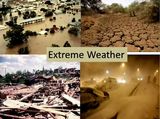
Certified Consulting Meteorologist Mike Smith of WeatherData Inc. in Wichita, KS, a world renowned expert on severe weather, talks about the issues of trying to connect weather and climate and where these issues fail.
https://www.youtube.com/watch?v=Zu-6NIUNNw0
Comment: From the WUWT comments I think the following deserves to be highlighted. Please note the mention of our cities that are now being increasingly seen as death traps during major natural disasters.
Stephen Rasey says: November 30, 2012 at 12:37 am
At the very end, Mike had three points:
1. You can be an environmentalist and conservationist and not believe in CAGW
2. We must build a more resiliant and sustainable society regardless of Global Warming, Global Cooling, ( or tsunami, earthquake, blizzard, pick your disaster).
3. Heed Storm warnings. Pick safety of your family over inconvenience.
I'm in agreement with all to various degrees.
1. You it is not necessary to buy in to the C, the A, the G, nor the W, to strongly believe in energy efficiency at rational cost and to eschew waste.
2. We cannot evacuate cities. We must HARDEN them. We must harden the infrastructure. We must HARDEN the will and skill of the PEOPLE who live in them.
3. Heed Storm warnings – but don't panic and don't over heed them.
This last point needs some elaboration. I live in Houston. Katrina hit New Orleans in 2005. Less than one month later, Rita, was targeting Houston. The costal communites needed to evacuate and the state set up evacuation routes well. Then Mayor Bill White overdid it: "Don't wait; the time for waiting is over," That brought the freeway system to a stand-still. Mayor White recanted within hours, but the damage was done; a million people were away from their homes, out of gas, facing the storm in their cars. People who really needed to evacuate faced choked highways far too close to the coastline and tight gas availability.
Three years later, IKE bigger than Katrina, came barreling through the Galvaston coastline, wiping out the Bolivar peninsula. Evacuations were much more orderly. Most people who didn't need to evacuate stayed home, thus leaving the road clearer for those who needed to bug out. That made life and recovery better for everyone. They say good judgment comes from experience, and experience comes from bad judgment.
US Power Grid Vulnerable to Just About Everything
Testosterone Pit, 28th November 2012
 As Washington hunts ill-defined al-Qaeda groups in the Middle East and Africa, and concerns itself with Iran's eventual nuclear potential, it has a much more pressing problem at home: Its energy grid is vulnerable to anyone with basic weapons and know-how.
As Washington hunts ill-defined al-Qaeda groups in the Middle East and Africa, and concerns itself with Iran's eventual nuclear potential, it has a much more pressing problem at home: Its energy grid is vulnerable to anyone with basic weapons and know-how.
Forget about cyber warfare and highly organized terrorist attacks, a lack of basic physical security on the US power grid means that anyone with a gun–like disgruntled Michigan Militia types, for instance--could do serious damage.
For the past two months, the US Federal Energy Regulatory Commission (FERC) has been tasked with creating a security strategy for the electric grid and hydrocarbon facilities through its newly created Office of Energy Infrastructure Security. So far, it's not good news. [...]
One key problem is theoretically a simple one to resolve: a lack of spare parts. According to the National Academy of Sciences, the grid is particularly vulnerable because it is spread out across hundreds of miles with key equipment not sufficiently guarded or antiquated and unable to prevent outages from cascading.
We are talking about some 170,000 miles of voltage transmission line miles fed by 2,100 high-voltage transformers delivering power to 125 million households.
"We could easily be without power across a multistate region for many weeks or months, because we don't have many spare transformers," according to the Academy.
High-voltage transformers are vulnerable both from within and from outside the substations in which they are housed. Complicating matters, these transformers are huge and difficult to remove. They are also difficult to replace, as they are custom built primarily outside the US. So what is the solution? Perhaps, says the Academy, to design smaller portable transformers that could be used temporarily in an emergency situation.
Comment: From the comments, "Another day, another apocalypse...." I think that will catch on...
Professor: "Really disturbed" by recent solar flares – We could have lots Fukushima-type events if one causes power blackout (VIDEO)
Energy News, 22nd November 2012
 From From Coast to Coast: In the first half, theoretical physicist and popularizer of science, Dr. Michio Kaku, discussed the latest science stories in the news, including monster solar flares, and the search for dark matter. Lately, the sun has been throwing "temper tantrums," with some very large solar flares, he said, and as we head into the maximum of the sunspot cycle, "the fear is that one of these solar flares could hit the Earth," like the event that occurred in 1859, which fried telegraph wires. He also noted that the asteroid Apophis could be a threat to our planet when it flies by in 2029, and again in 2036, though the odds have diminished somewhat that it will be a direct hit.
From From Coast to Coast: In the first half, theoretical physicist and popularizer of science, Dr. Michio Kaku, discussed the latest science stories in the news, including monster solar flares, and the search for dark matter. Lately, the sun has been throwing "temper tantrums," with some very large solar flares, he said, and as we head into the maximum of the sunspot cycle, "the fear is that one of these solar flares could hit the Earth," like the event that occurred in 1859, which fried telegraph wires. He also noted that the asteroid Apophis could be a threat to our planet when it flies by in 2029, and again in 2036, though the odds have diminished somewhat that it will be a direct hit.
Comment: Sorry, there was a few links to choose from here, but I liked the headline at Energy News. Anyway, I actually wonder whether Michio Kaku has found my website yet... He is really getting on the ball with Space Weather and the grim reality of the vulnerability of our modern technological world... Yes, he does regularly talk about big solar flares and CMEs, but I think this is the first time I have come across him worried about nuclear power plants needing uninterrupted power supply 24/7.... No doubt, he does have a well functioning brain inside his head and was stunned by the vulnerability when Superstorm Sandy caused massive blackouts and at least 5 nuclear power plants had problems... You need to be a member to access the C2C show on their website, but there are short and long versions of this interview on YouTube, see below:
The Classified Report DHS Doesn't Want You To See: "The Electric Power Delivery System… Could Be Severely Damaged By A Small Number of Well-Informed Attackers"
SHTFplan.com, 15th November 2012

In 2007 the National Academy of Sciences completed an extensive review of the national power grid infrastructure in a 164 page report titled Terrorism and the Electric Power Delivery System. In it the NAS detailed a wide array of physical, personnel and cyber vulnerabilities that could pose a significant risk to the national security of the United States.
Even though the report was originally written for public release, notes Madison Ruppert of End the Lie, the entire document was almost immediately classified by the Department of Homeland Security and hasn't seen the light of day until this week. That release came after five years of committee reviews, reversals, deliberations and pressure from the Academy itself.
The contents of the report make it clear why DHS wanted to keep it out of public view, as it illustrates severe deficiencies within the whole of the national power grid infrastructure.
Comment: This is essential reading especially after the fiasco in New York. Here is another important excerpt:
A terrorist attack on the power system would lack the dramatic impact of the attacks in New York, Madrid, or London. It would not immediately kill many people or make for spectacular television footage of bloody destruction. But if it were carried out in a carefully planned way, by people who knew what they were doing, it could deny large regions of the country access to bulk system power for weeks or even months. An event of this magnitude and duration could lead to turmoil, widespread public fear, and an image of helplessness that would play directly into the hands of the terrorists. If such large extended outages were to occur during times of extreme weather, they could also result in hundreds or even thousands of deaths due to heat stress or extended exposure to extreme cold. [...]
Full Report: National Academy of Sciences
Well, as this article points out, the Department of Homeland Security have sat on this report for five years, so none of the proactive measures recommended by the report have been taken. But then one of the nightmare scenarios occurred when New York got hit by an extreme weather event... The DHS fully expects "hundreds or even thousands of deaths due to heat stress or extended exposure to extreme cold." I expect there to be trouble as people find out about this report...
Weather Channel spawns 'Deadliest Space Weather': New series to highlight extreme conditions in solar system
Chicago Tribune, 14th November 2012
 The Weather Channel will take viewers out of this world with "Deadliest Space Weather," a new original series slated to bow in January.
The Weather Channel will take viewers out of this world with "Deadliest Space Weather," a new original series slated to bow in January.
Each half-hour episode will highlight extreme weather conditions throughout the solar system and explore what would happen if these weather patterns occurred on Earth. Examples include Venus's acid rain, Saturn's winds and Mars' dust storms.
"Exploring these unique weather phenomena in our solar system is a fascinating journey, but one understands the true magnitude of these galactic storms so much more when they are theoretically placed into the familiar context of life on Earth," said Michael Dingley, senior VP of content and development at the Weather Channel.
Comment: Interesting....
Probing The Flyby Anomaly With The Future STE-QUEST Mission
Technology Review, 31st October 2012
 The European Space Agency is currently considering a mission for launch in 2022 or 2024 called the Space-Time Explorer and Quantum Equivalence Principle Space Test or STE-QUEST.
The European Space Agency is currently considering a mission for launch in 2022 or 2024 called the Space-Time Explorer and Quantum Equivalence Principle Space Test or STE-QUEST.
This is a mission to test various questions about gravity, such as equivalence principle which holds that inertial mass is the same as gravitational mass. Or, in other words, that the mass in F=ma is the same stuff as the mass in F = Gm1m2/r^2. The mission will also seek to measure gravitational red shift.
To test this, the mission will measure the way atoms fall in a gravitational field while passing repeatedly along a highly eccentric orbit around Earth.
Comment: It seems that ESA astrophysicists are investigating the apparent change in the properties of space-time around our planet... Basically, there is a pronounced difference between spacecraft moving againt the flow of aether and towards the flow of aether, thus the impact on gravity and space craft anomalies are just a side affect of what is really happening... There are websites that specialise on the practicalities of how scientists already compensate for space-time/aether affects but it seems we can add another space agency mission specifically trying to understand the impact of the cosmic changes in the environment of Earth.
China's Space Weather Meridian Project operational
China Daily, 24th October 2012
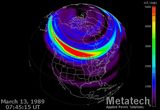 BEIJING - The "Meridian Project," a massive scientific research project that will monitor weather in space, became fully operational on Tuesday. [...]
BEIJING - The "Meridian Project," a massive scientific research project that will monitor weather in space, became fully operational on Tuesday. [...]
The project began in January 2008, providing forecasts and warnings for the Tiangong-1 and Shenzhou-8 missions in 2011 and the Shenzhou-9 mission in June, according to the statement.
The project aims to "investigate space weather cause-consequence chains in solar-terrestrial space, as well as understand the processes behind catastrophic space weather events and the regional characteristics of the environment above China's territory," said the statement.
A large-scale ground-based monitoring system composed of 15 stations will be set up as part of the project, according to the CAS. A comprehensive multi-layered and inter-disciplinary survey and exploration of space will be conducted as well, it said.
Another similar project is in the works. Authorities are creating plans for the International Space Weather Meridian Circle Program, which will consist of another series of ground-based monitoring stations that will "greatly enhance China's ability to monitor the space environment worldwide," the statement said.
The stations will monitor a large area between Russia and Australia, as well as other regions, the statement said.
"Most countries in these regions have applauded the project," the statement said.
Comment: This is an indication that governments worldwide are taking the threat of space weather very seriously.
Engineers investigate effects of space weather on airliners
The Engineer, 11th October 2012
 Engineers at Qinetiq are investigating the effects of geomagnetic storms and space weather on commercial airliners with a view to developing mitigating technology solutions.
The company is conducting commissioned research into the phenomenon, developing sensors for advanced warning and designing novel system architectures with better tolerances.
Engineers at Qinetiq are investigating the effects of geomagnetic storms and space weather on commercial airliners with a view to developing mitigating technology solutions.
The company is conducting commissioned research into the phenomenon, developing sensors for advanced warning and designing novel system architectures with better tolerances.
The increase in microelectronics systems in aircraft in the past few decades means that they are potentially more vulnerable to geomagnetic events originating from space.
The main threat to aircraft systems specifically is from neutrons that are created in the atmosphere through the collision of space phenomenon such as solar flares with the Earth's magnetic field.
'Think of what's happening as being rather like the Large Hadron Collider going on all the time at the top of the atmosphere,' Keith Ryden, senior consultant on space environments and effects, told The Engineer.
'They [the neutrons] are very penetrating because they're not charged and they go through the aircraft and into equipment. If they reach a silicon device, because they're travelling so fast, basically a nuclear reaction happens inside the silicon that causes a certain quantity of charge to be developed.'[Oh really....]
Studies have shown that at a very fundamental level this can lead to so-called 'bit flips' where a 1 changes to a 0 and a 0 to a 1 in various locations.
This can have a variety of unpredictable consequences but there is evidence to suggest that autopilot systems are particularly vulnerable. During a Qantas Airbus 330-303 flight in Australia in 2008, the autopilot dived twice without warning due to scrambled data, injuring 122 crew and passengers, 13 seriously. Subsequent investigations suggested it could have been a 'single-event effect' in the computer caused by geomagnetic activity.
Comment: This is a very useful article (and technical enough) explaining that there is a growing awareness that microelectronics in airplanes are becoming very vulnerable to space weather and backs up the assertions that I have been making for years now... Finally we have got the truth about what happened to the Qantas Airbus 330-303 flight in Australia in 2008, when 122 people were hurt and 13 seriously hurt when the plane took an unexpected nosedive, see archives. It seems that engineers are not bothering with the stupid excuse of latops causing electromagnetic interference (EMI), rather we get a much more serious explanation of neutrons from space causing nuclear reactions in electronics...
Arctic probe into solar storm sat-nav disruption
BBC News, 10th October 2012
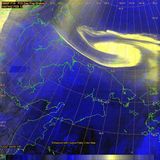 Scientists in the Arctic have launched an urgent investigation into how solar storms can disrupt sat-nav.
Scientists in the Arctic have launched an urgent investigation into how solar storms can disrupt sat-nav.
Studies have revealed how space weather can cut the accuracy of GPS by tens of metres.
Flares from the Sun interact with the upper atmosphere and can distort the signals from global positioning satellites.
The research is pressing because rapid warming is attracting more vessels, tourists and mining operators.
The project is under way at a remote observatory on a windswept mountainside in the Norwegian archipelago of Svalbard in the High Arctic. [....]
Professor Lorentzen said: "If you have a very large solar storm, you can get a distortion of up to tens of metres.
"It's absolutely important to understand why this is happening so that if we know that we have a solar storm, then we might be able to predict the deviation or accuracy of the GPS signal in the future."
This matters as the retreat of Arctic ice opens up the region to new activities including oil drilling, shipping and tourism - all of which require highly accurate navigation especially for search and rescue.
But signal distortion has also been observed at much lower latitudes during solar storms so may have more widespread implications.
Comment: Apparently, this is now urgent.... We have been given some good information as the military used to have GPS accurate to within 1 metre, but now that can be out by 300% even without a geomagnetic storm where it seems the distortion is "up to tens of metres...." Presumably things are now desperate.... Well, since 2004 when I realised that space weather was delivering evolutionary change, I realised what was going to happen, it was extremely obvious to me... But, I have been very much on my own as very few really understand even basic physics. Furthermore, even fewer understand the ancient warnings that our planet has been subjected to cosmic deluges many times in the past. Please see below and archives for previous warnings about GPS from military sources and information concerning the massive impact on our modern technological infrastructure.
-
Flashback!
Comment: In an article for the Air Force Times, Schwartz warns against dependence on GPS, dated 23rd January 2010, and it seems there has been a major change of heart about the military use of GPS. This is a new dispensation, dependency on GPS accuracy is now a thing of the past.
 The Air Force's top uniformed leader thinks the military is too dependent on global positioning and must develop an alternative to the navigation system to reduce its vulnerability to enemies.
The Air Force's top uniformed leader thinks the military is too dependent on global positioning and must develop an alternative to the navigation system to reduce its vulnerability to enemies.
Chief of Staff Gen. Norton Schwartz delivered his warning about the government's satellite constellation Jan. 20 at a national security conference in Washington but also assured his fellow defense leaders that Air Force scientists are working to develop other navigational technologies.
"Global positioning has transformed an entire universe of war-fighting capability. Our dependence on precision navigation in time will continue to grow," Schwartz said in the opening address to the conference, sponsored by the Institute of Foreign Policy and Tufts University's Fletcher School. "It seemed critical to me that the joint force reduce its dependence on GPS aid." [...]
Schwartz told the audience he fears reliance on GPS could paralyze operations if an enemy blocked the GPS datalink or – even worse – programmed U.S. satellites to send the wrong coordinates.
"Our operations cannot grind to a halt for a degraded or denied system," he said. "Our reliance on information technologies, for example, is very well known."
Schwartz warns against dependence on GPS,
Air Force Times, 23rd January 2010
I have already quoted from the Lloyds Space Weather, Its impact on Earth & Implications for business report already once this week, but I will repeat it again, hopefully after the recent media focus on space weather in the last few weeks, I believe there must be some new website visitors who would be interested to understand the implications of what is happening. Thus we read:
 Businesses should avoid reliance on satellite navigation as the sole source of position data.
Businesses should avoid reliance on satellite navigation as the sole source of position data.
"The major risk is the potential to lose the satellite navigation signal completely. We expect that disturbed space weather conditions will become much more common in the period from 2012 to 2015 due to increasing solar activity. Therefore it is likely users will experience a loss of signal more often. In such cases, we may expect major position errors to arise, perhaps comparable to those caused by the transmission of competing radio signals, known as jamming. For example, a recent jamming test in the UK showed position errors of up to 20km. Businesses should avoid reliance on satellite navigation as the sole source of position data. It is essential to have a second system that uses a different technology. A good example is the enhanced-LORAN navigation systems, such as that now being deployed in the UK."
Space Weather, Its impact on Earth & Implications for business
Lloyd's of London, November 2010
Please do not be fooled, space weather IS the biggest enemy to Military operations and hence the encouragement to start learning how to do without, hence the need for military exercises. Space weather is cosmic energies frying satellites and swamping our planet, it is clear that things are getting far worse, as there has been some interesting examples of major technological failures, see archives, but please note: I have been listing biological failures too for quite some time.
New GPS Satellite Modernizes Network
Precision Pays, 5th October 2012
"The U.S. Air Force has launched a United Launch Alliance Delta IV-Medium rocket carrying the third Global Positioning System IIF satellite which will provide more accurate navigation for military and civilians..."
NBC's 'Revolution' Review: More Than A Shot In The Dark?
Star Pulse, 17th September 2012
NBC has a much-needed hit their hands, and it's not "Guys With Kids." It's "Revolution," a riveting sci-fi drama from the mind of "Supernatural" creator Eric Kripke, produced by J.J. Abrams ("Lost," "Fringe") that could re-energize the institution of appointment television that's withering, thanks to iTunes, Tivo and DVRs.
"Revolution" tells the story of life after a mysterious event that essentially kills electricity and all electronics, plunging the entire world into darkness. Fifteen years after the blackout governments have fallen. States devolved into isolated republics and the suburbs into armed villages. The show hones in on Ben Matheson (a wholesome Tim Guinee) and his endangered and, of course, ruggedly hot children: fierce Charlie (Tracy Spiridakos) and her little brother Danny, who is spirited and asthmatic. Of course, there is a bigger conspiracy that begins to reveal itself when Ben is cut down by a Milita unit led by "Breaking Bad's" Giancarlo Esposito. His dying breaths are spent to tell his daughter to go find her uncle in Chicago, because he's "good at killing," and he'll be able to help her save her kidnapped brother.
Comment: Hopefully, this might cause a few more to wake up to the reality of space weather...

Congress told: U.S. life 'unsustainable' after EMP
Member warns worst case 'so bad we must prevent it at all costs'
World Net Weekly, 13th September 2012
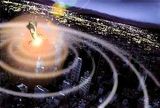 WASHINGTON – Congress today was told that the Department of Homeland Security hasn't identified an electromagnetic pulse, or EMP, event as a serious national security threat to the nation's grid system even though testimony revealed it could making living in the United States "unsustainable" for 70 to 90 percent of the population.
WASHINGTON – Congress today was told that the Department of Homeland Security hasn't identified an electromagnetic pulse, or EMP, event as a serious national security threat to the nation's grid system even though testimony revealed it could making living in the United States "unsustainable" for 70 to 90 percent of the population.
And the few billion dollars it would cost to harden systems against such an occurrence is hardly the tens of billions or hundreds of billions it could cost to repair the damage.[...]
Rep. Trent Franks, R-Ariz, who is on the House Armed Services Committee, also testified that the military is highly vulnerable to an EMP event, since it relies some 99 percent on the national grid to accomplish its functions.
McClelland made it clear that the challenge will be in getting local electrical distribution facilities to take the threat of an EMP seriously and put up the capital investment.
"The question is how to do that," he said.
Comment: Well there you go.... Even if "70 to 90 percent of the population" is an exaggeration, if the national grid is partly destroyed millions will die because society cannot sustain such large numbers of people without electricity. Obviously, there are those in the US Military who are well aware of what is happening in space (the Russians noticed changes in the 1960s) and the fact we are becoming very vulnerable to a highly charged space environment. But, what is worse is they know that they are heavily reliant on the civilian world that is clueless.... Due to the way these guys operate, it is not too difficult to envisage that shock tactics will be used to get what they want (please excuse the pun).... This is all so ironic after the deliberate efforts to keep people stupid and now stupid rules... Thanks Deborah S. for the link.
Europe sets sights on asteroid tracking radars
Would radars help track the 14-story size asteroid currently approaching Earth?
Network World, 12th September 2012
 The European Space Agency today said it would develop a radar system that will be capable of tracking space hazards such as asteroids and orbital debris.
ESA and France's Office National d'Etudes et Recherches Aérospatiales - research center will work with five other partners in France, Spain and Switzerland to this month design a test surveillance radar and develop a $6 million demonstrator model.
The European Space Agency today said it would develop a radar system that will be capable of tracking space hazards such as asteroids and orbital debris.
ESA and France's Office National d'Etudes et Recherches Aérospatiales - research center will work with five other partners in France, Spain and Switzerland to this month design a test surveillance radar and develop a $6 million demonstrator model.
Comment: It is public knowledge that about 9,000 asteroids are passing Earth at any one point in time, but it seems that the increasing number of cosmic objects entering Earth's atmosphere is of concern to world controllers.... The space agencies need radar because these objects are essentially invisible due to the type of energy cloaking the asteroids and detection must be done in exactly the same way as we detect UFOs or UAPs. For those interested in the metaphysical implications, the asteroids are being carried on a tide of primordial energy from deep space, this energy is creative and transformative and that is why we can expect a spiritual transformation on this planet. The affects have already been noticeable for a few decades already.
Will next 'solar max' fry electronics?
EE Times, 5th September 2012
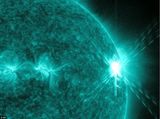 WASHINGTON – The combination of the approaching "solar maximum" and the deployment of a new generation of compact yet vulnerable satellite electronics has space weather experts gearing up their efforts to prevent disruptions to communications, navigation and other vital networks. [...]
WASHINGTON – The combination of the approaching "solar maximum" and the deployment of a new generation of compact yet vulnerable satellite electronics has space weather experts gearing up their efforts to prevent disruptions to communications, navigation and other vital networks. [...]
Space weather experts concerned about the impact of the next solar maximum on satellite electronics are preparing to measure the properties of a highly-charged space environment while gauging the effects of the next wave of space weather on the latest generation of satellites.
Comment: Fortunately, the military are interested in Earth and it's space environment charging up like a battery.... The revelation that space is now "highly-charged" only confirms information provided by Russian scientists that was freely provided on the internet and called the Planetophysical Report (1998), see archives for links and quotes. Yet, this short article reminds me of when I was involved with people aiming to build up their energy fields to act as "cosmic shields"... I have since spent thousands of hours working to explain what is going on, but outside the space community, there has not been a great deal of interest in our new cosmic reality, not even from the metaphysical community, because as I have come to realise, most are not interested in too much reality....
Ghostly Night-Shining Clouds Get Their Glow from Meteor Smoke
Space.com, 3rd September 2012
 Rare and mysterious clouds that are so bright they can be seen at night have mystified people since they were first observed more than a century ago, but scientists have now discovered a key cosmic ingredient for these night-shining clouds: "smoke" from meteors as they burn up in the Earth's atmosphere.
Rare and mysterious clouds that are so bright they can be seen at night have mystified people since they were first observed more than a century ago, but scientists have now discovered a key cosmic ingredient for these night-shining clouds: "smoke" from meteors as they burn up in the Earth's atmosphere.
Blue-white clouds that eerily glow in the twilight sky are called noctilucent clouds, or NLCs. They typically form about 50 to 53 miles (80 and 85 kilometers) above ground in the atmosphere, at altitudes so high that they reflect light even after the sun has slipped below the horizon. [...]
In a new study, scientists found that noctilucent clouds have an extraterrestrial link.
"We've detected bits of 'meteor smoke' imbedded in noctilucent clouds," James Russell, an atmospheric scientist at Hampton University in Hampton, Va., said in a statement. "This discovery supports the theory that meteor dust is the nucleating agent around which NLCs form."
Comment: The article forgets to mention that noctiliucent clouds are electrified as the rarefied layer of Earth's upper atmosphere where noctilucent clouds form is "one hundred million times dryer than air from the Sahara desert." It is only possible to 'see' blue ice crytals 50 to 53 miles up because they are charged and producing an electric glow....
Government adviser in fight to 'save Earth' against devastating solar storms expected to knock out National Grid in 2013
Daily Mail, 23rd August 2012

- National Grid and GPS expected to go down if burst from sun hits our planet
- Sun will reach peak of 11-year solar storm cycle next year, and magnetic storms could knock out most of Earth's electrical items
- A big storm in 1859 knocked out early telegraph systems - but world is much more dependent on electricity now
A space professor from Oxfordshire is battling 'to save Earth' from a solar storm that experts fear will wreak worldwide chaos next year.
Professor Mike Hapgood, who chairs the Space Environment Impacts Experts Group (SEIEG) and advises the Government on space weather, says solar storms, generated by an outburst from the sun, are set to knock out national power grids and Global Positioning Systems.
He believes magnetic rays from the storm will result in widespread blackouts which will plunge homes and businesses into darkness.
Comment: Of course, this is not the complete story... the cosmic conditions around Earth have changed dramatically, there could be a massive burst from the sun at any time and Earth's cosmic shield is now weak.... it makes you wonder when such effort was made to preserve ancient knowledge why world controllers failed to heed the warnings... It is also disappointing that the metaphysical community did not do such a great job either preparing people for some cosmic reality.... Even now, there seems to be total silence and I suspect that maybe too many people don't understand celestial mechanics and can't see how a major outpouring of spiritual energy has anything to do with reality.... Whatever, I am pleased that Prof. Mike Hapgood actually cares enough to speak up and tell it how it is....
Solar storms can destabilize power grids at midlatitudes
Phys.Org News, 31st August 2012
 The Sun is capable of disrupting electrical systems on Earth in a variety of ways, from solar flares and coronal mass ejections to proton storms. [...]
At 1:20 UT on 6 November 2001, a high-density pocket of solar wind, 18 nanoPascals above the background pressure, sped past the Solar and Heliospheric Observatory (SOHO) satellite, which was orbiting 197 Earth radii above the Earth toward the Sun. In half an hour, this high-pressure wave traveled more than a million kilometers (620,000 miles) to the Earth's magnetopause. The high- pressure pulse induced currents both in the magnetopause and in power lines across New Zealand, causing alarms to be tripped and a transformer to fail catastrophically.
The Sun is capable of disrupting electrical systems on Earth in a variety of ways, from solar flares and coronal mass ejections to proton storms. [...]
At 1:20 UT on 6 November 2001, a high-density pocket of solar wind, 18 nanoPascals above the background pressure, sped past the Solar and Heliospheric Observatory (SOHO) satellite, which was orbiting 197 Earth radii above the Earth toward the Sun. In half an hour, this high-pressure wave traveled more than a million kilometers (620,000 miles) to the Earth's magnetopause. The high- pressure pulse induced currents both in the magnetopause and in power lines across New Zealand, causing alarms to be tripped and a transformer to fail catastrophically.
Comment: This is highlighting the existence of a research paper warning that there are regions on this planet where authorities should not think they are 'safe' from the impact of geomagnetic storms.... I agree there should be no complacency because it may not be possible to recover quickly from a large grid failure... Btw, 27 amperes is HUGE.... but it interesting that Marshall et al. can only guess why high currents don't always cause a problem, a reminder of the Russian roulette nature of space weather.
Westpac glitch halts eftpos, credit cards [NZ]
stuff.co.nz, 2nd September 2012
A problem with Westpac's computer system had shoppers scrambling to use other means of paying this morning.
Supermarkets reported Westpac customers were not able to use their credit or eftpos cards and Westpac ATM machines were also not working. [...] The bank had a similar nationwide outage last month. It was attributed to a data connection problem.
A nationwide outage last month too..... ATMs not working is nothing new, yet the frequency appears to be increasing, but finding data to backup this claim is an issue when banks want to hide the extent of their difficulties. Whatever, I am now quite confident that due to Earth's magnetic field declining there will be a more obvious impact from space weather. The rate of computer and network problems will get worse....
ACE, Workhorse Of NASA's Heliophysics Fleet, Is 15
NASA News, 29th August 2012
 The Advanced Composition Explorer (ACE) is Earth's vanguard. Orbiting around a point 900,000 miles away between the Earth and our sun, this satellite is ever vigilant, recording the combination of radiation - from the sun, from the solar system, from the galaxy - that streams by. None of this radiation can harm humans on Earth, but the biggest bursts of particles from the sun can flow into near-Earth space causing a dynamic space weather system that can damage satellites and interfere with radio communication transmissions and navigation systems.
The Advanced Composition Explorer (ACE) is Earth's vanguard. Orbiting around a point 900,000 miles away between the Earth and our sun, this satellite is ever vigilant, recording the combination of radiation - from the sun, from the solar system, from the galaxy - that streams by. None of this radiation can harm humans on Earth, but the biggest bursts of particles from the sun can flow into near-Earth space causing a dynamic space weather system that can damage satellites and interfere with radio communication transmissions and navigation systems.
Comment: The ACE satellite is well past its sell by date, as concerned space scientists and others have revealed and needs to be replaced. Here is my Solar Prayer....
Solar Prayer
Our Solar which art in heaven,
Solar Maximum be thy name.
Thy solar wind come, thy will be done,
but don't let the ACE satellite break down.
Give us this day our daily sunspots,
but shield us from X-rated solar flares,
full halo coronal mass ejections
and highly dangerous proton storms.
And lead us not into a Maunder Minimum,
but deliver us from a category 5
geomagnetic storm and transformer burnout.
For thine is the solar system, the IBEX and the ribbon,
Solar radiance for ever and ever.
Amen.Copyright © Susan Joy Rennison
'Urgent' Notice From National Research Council - 'The Sun'
Earth Changes Media, 17th August 2012
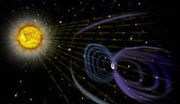 A new report from the National Research Council presents a prioritized program that will advance scientific understanding of the Sun, Sun-Earth connections and the origins of "space weather," and the Sun's interactions with other bodies in the solar system.
Why do you think the NRC has become so alarmed as to put out a "prioritized and immediate" request from NASA, NSF, NOAA, Univ. of Colo. Atmospheric and Space Physics, Goddard Space Flight Center (GSFC) and Johns Hopkins University of Applied Physics? [...]
IMMEDIATE ACTION REQUESTED
A new report from the National Research Council presents a prioritized program that will advance scientific understanding of the Sun, Sun-Earth connections and the origins of "space weather," and the Sun's interactions with other bodies in the solar system.
Why do you think the NRC has become so alarmed as to put out a "prioritized and immediate" request from NASA, NSF, NOAA, Univ. of Colo. Atmospheric and Space Physics, Goddard Space Flight Center (GSFC) and Johns Hopkins University of Applied Physics? [...]
IMMEDIATE ACTION REQUESTEDImmediate recommended actions put forth by the NRC include completion of projects in the current program of NASA and the National Science Foundation, to allow "augmentation" of NASA and NSF enabling programs for "acceleration and expansion" of NASA's Heliophysics Explorer Program.
'Augmentation': to amplify, accelerate, expand, heighten, intensify, reinforce, and strengthen.
'Heliophysics': The scientific study of the Sun-Earth connection. This includes the study of Earth's magnetic field, the Earth's core - outer core - mantle - and plate tectonics. This also includes (and perhaps is directed toward) the Earth's magnetic field decrease, magnetic field excursions and final reversal, charged particle radiation which encompasses cosmic rays, gamma rays, solar flares, coronal mass ejections, and coronal hole filament.
Comment: Thanks Mitch, we finally get to find a link to the free NRC online report... So it seems that space weather is getting more serious as predicted... The link below is for the original press release from the National Academy of Sciences, with the relevant NRC report link.
New Report Presents Research Program for Solar and Space Physics Over the Next Decade
National Academy of Sciences, 15th August 2012
Red Sprites – A True Space Weather Phenomena
Spaceweather.com, 21st August 2012
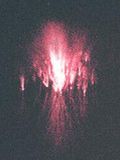 RED SPRITES:
RED SPRITES: High above Earth in the
realm of meteors and noctilucent clouds, a strange
and beautiful form of lightning dances at the edge
of space. Researchers call the bolts "sprites";
they are
red,
fleeting,
and tend to come in
bunches.
Jesper Grønne of Silkeborg, Denmark, photographed
these specimens on August 15th:
"Sprites are a true space weather phenomenon," explains lightning scientist Oscar van der Velde of Sant Vicenç de Castellet, Spain. "They develop in mid-air around 80 km altitude, growing in both directions, first down, then up. This happens when a fierce lightning bolt draws lots of charge from a cloud near Earth's surface. Electric fields [shoot] to the top of Earth's atmosphere--and the result is a sprite. The entire process takes about 20 milliseconds."
Comment: The most interesting aspect of sprites is how the plasma takes on a life-like appearance, with a common appearance of sprites that look like jelly-fish and squid... At this moment, I consider this a type of plasma manifestation and not an entity, but traditionally, the 'sky dancers' are called Dakinis by Tibetan monks and are associated with a special energy that they believe enhances spiritual development.

Sun Dominates Space Weather Concerns for Next Decade: Report
Space.com, 16th August 2012
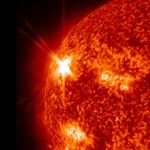
A new report based on input from the science community outlines the most pressing objectives over the next decade for studying the sun and the far-reaching effects of solar activity. The report, which was released yesterday (Aug. 15) by the National Research Council, identifies specific science goals and provides recommendations for how to maintain robust and effective programs despite budgetary constraints.
The study is the council's second decadal survey for solar and space physics. The committee that wrote the 454-page report, led by Daniel Baker of the University of Colorado in Boulder, pinpointed the top research priorities in heliophysics for the decade spanning 2013 to 2022.
More than 85 scientists and space system engineers contributed to the study, which aims to guide the ongoing and future initiatives of government agencies, including NASA, the National Science Foundation and the National Oceanic and Atmospheric Administration.
Comment: This is a brand new major space weather report. I have also been sent details of space weather conferences being organised around the world by The International Emergency Management Society - TIEMS. This year TIEMS plans to arrange 13 conferences and workshops around the world. The planned locations are: Norway, Japan, Nepal, Russia, Tunisia, Philippines, Romania, Finland, Korea, China, France, BeNeLux and India. See the following link below that provides the details for Oslo, October 2012. Thanks to E. Breiteig for the info.
Space Weather and Challenges for Modern Society, Oslo 22 - 24 - October 2012
Future Violent Space Weather a Key Concern [Slideshow]
The sun and its impact on Earth has been identified as an area of study that needs increased investment.
Discovery News, 16th August 2012

NVE supports a TIEMS conference on "Space Weather and Geomagnetic Induced Currents".
Norwegian Water Resources and Energy Directorate, 1st January 2012
NVE supports a TIEMS conference on "Space Weather and Geomagnetic Induced Currents".
Illustration: NASA Illustration: NASA
The TIEMS (The International Emergency Management Society) conference focusing on "Solar Activity and Potential Damaging Consequences for Industrial Operations and Critical Infrastructure" will be held in Oslo, Norway October 2012

Space Weather Quarterly
American Geophysical Union, August 2012
 Meeting Reports:
Meeting Reports:
• European Commission's
Space Weather
Awareness Dialogue
• Highlights of the Space
Weather Risks and Society
Workshop
Technical:
• Did Geomagnetic Activity
Challenge Electric Power
Reliability During Solar Cycle 23?
It's a 32 pages long .pdf file ....
NASA is tracking electron beams from the Sun
PhysOrg.News, 16th August 2012

"...the sun sends out a steady outflow of solar particles called the solar wind and additionally giant, sudden explosions of material called coronal mass ejections or CMEs erupt out into space. Skoug studies a third kind of particle flow: jets of high-energy electrons streaming from the sun known as electron strahl. Through a new five-year study of observations of the strahl, Skoug and her colleagues have researched another piece of this giant space weather puzzle around Earth."
Comment: Yes, these strahl electrons are even creating a new type of space weather...
New system could predict solar flares, give advance warning
PhysOrg.com, 13th August 2012

(Phys.org) -- Researchers may have discovered a new method to predict solar flares more than a day before they occur, providing advance warning to help protect satellites, power grids and astronauts from potentially dangerous radiation.
The system works by measuring differences in gamma radiation emitted when atoms in radioactive elements "decay," or lose energy. This rate of decay is widely believed to be constant, but recent findings challenge that long-accepted rule. [...]
Comment: Space weather forecasts are now necessary but this is a new area of science and the space community is desperate for any help they can get. What is really interesting, is that researchers who claimed the rate of radioactive decay was not a constant were ignored and/or derided in the past, but all of a sudden, 'needs must' as the say. So, now we have a new way of monitoring space weather caused by the extreme activity of the Sun and I imagine this fact has been seized upon with a vengence. Of course, the physics is not properly understood, but some theory will have to be agreed upon at some time in the future. Btw, I don't think the ultimate cause of decay rate variability is neutrinos, I think it is sound waves, an aspect of the Sun that does not get much attention...
Protecting Earth from extreme solar storms
Oxford Mail News, 7th August 2012

Prof Hapgood said: "A big magnetic storm can permeate the Earth's crust, which can drive electric currents through aluminium or copper wires in the National grid, which could cause a national blackout.
"Interactions with Earth's atmosphere can also affect any radio signals.
"If you had a big storm, GPS might be unavailable for a couple of days.
"On July 21 this year there was a very large event on the far side of the sun, if it had intercepted Earth we would have had a very large magnetic storm."
Prof Hapgood, who studied at Oxford University , has worked at Rutherford for 30 years.
He now chairs the Space Environment Impacts Experts Group (SEIEG) which advises the Government on space weather.
He said: "My main interest is to study the likely extremes in these scenarios. [...]
Prof Hapgood explained there is currently one possible defence.
He said: "It sounds counter-intuitive, but actually the National Grid could switch on the whole grid, to block the effect of extra currents.
"At the moment we rely on one American aircraft called ACE which measures the speed of solar flares, plasma coming towards Earth, and its speed and density, but even that can only give a 20 minute warning."
Prof Hapgood warned that even though next year would bring a peak of solar activity, the Earth is always under threat.
Comment: This is the first time I have read about this idea of turning the national power grid on full blast to block the effect of extra currents.... I am doubtful, but we have to rely on the experts who now look as if they are taking the threat of space weather as a constant risk far more seriously.
-
Groundbreaking NASA Mission Studies Space Weather
American University Radio, 3rd August 2012
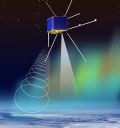 On Aug. 23, NASA is launching the second mission in its "Living With a Star" program, which aims to improve our understanding of the sun, and how it affects us humans in space and on Earth.
On Aug. 23, NASA is launching the second mission in its "Living With a Star" program, which aims to improve our understanding of the sun, and how it affects us humans in space and on Earth.
The upcoming launch will focus on space weather. David Sibeck, a mission scientist at NASA Goddard Space Flight Center in Greenbelt, Md., defines space weather as "the set of effects that happen in space that can affect humans and their technology in space."
It's different from Earth weather, he says, though "we use the same kind of terminology. We have storms in space, but they're caused by disturbances coming out from the sun. Big blobs of charged plasma that can envelop spacecraft and cause short circuits and other effects in those spacecraft."
Now, this "charged plasma" Sibeck talks about dominates interplanetary space. In fact, 99 percent of the universe is made up of this electrified gas. And immediately surrounding our planet, we have two giant rings of highly-radioactive plasma. They're called the Van Allen Radiation Belts, named for the late space scientist, James Van Allen.
Comment: This article is just highlighting the most recent and important space weather studies that scientists are anticipating will provide some answers to what is going on around Earth. New studies are required because the increasing ferocity of space weather is causing concern for the long term feasibility of the world's radio and satellite communications systems that are a vital part of our modern technological world. There are more links of recent space studies linked below.
-
Cluster looks into waves in the magnetosphere's thin boundaries
Space Daily, 7th August 2012
"Exploiting a favourable configuration of ESA's Cluster mission spacecraft, scientists have detected and characterised lower hybrid drift waves, a special kind of plasma waves that develop in thin boundaries both in space and in the laboratory."
-
Shear Layers in Solar Wind Affect Earth's Magnetosphere
Space Ref News, 1st August 2012
Solar superstorm could kill millions, cost trillions
Reuters, 3rd August 2012

(Reuters) - Weather has been lousy this year, with droughts, heat and killer storms. But a solar superstorm could be far worse.
A monster blast of geomagnetic particles from the sun could destroy 300 or more of the 2,100 high-voltage transformers that are the backbone of the U.S. electric grid, according to the National Academy of Sciences (NAS). Even a few hundred destroyed transformers could disable the entire interconnected system.
Comment: It really does look like the message about the seriousness of space weather and the vulnerability of the national power grid is getting through..... But, as I have already explained many times before, the issue is not another mega geomagnetic storm like the Carrington Event that space scientists believe occurs once every 500 years. Simply, we cannot use the past to predict the future because it is a fact that Earth's magnetic defenses are weakening (even disappearing at times) and the local cosmic environment is much more permeable to flows of cosmic energy as various sources have explained in recent years. Planet Earth is being electrically "zapped" by massive blasts of charged particles during solar storms and if there is a shock that is too big, the consequences will be severe as this article nicely explains. I have not heard of a transformer trio and this looks like a solution but centralised grids need to be irradicated because they will not work long term due to cosmic climate change. Earth acts like a giant capacitor in space and the build up of energies on Earth is set to continue. If you don't know, planet Earth is back on it's way to 'Paradise' which can be defined as Earth hosting a high energy plasma environment that we know also existed in ancient times, as it is the only way to interpret an extensive body of ancient knowledge. Thus as Earth charges up like a battery, much of today's technology will not be compatible as we are already finding out....









